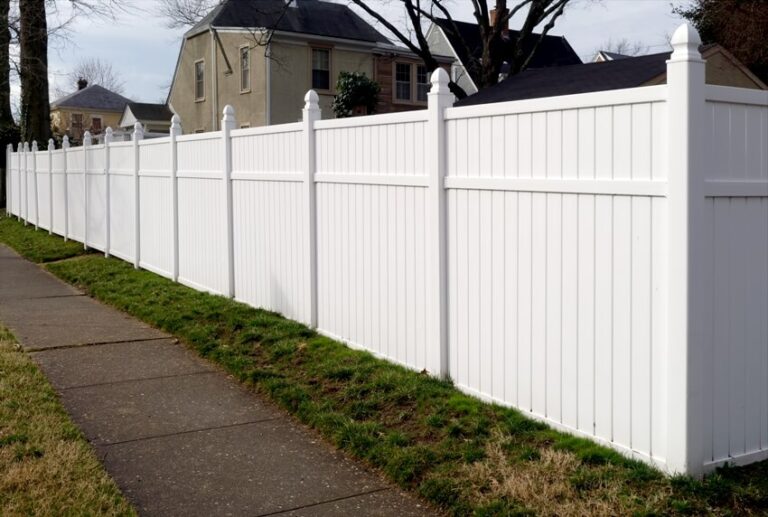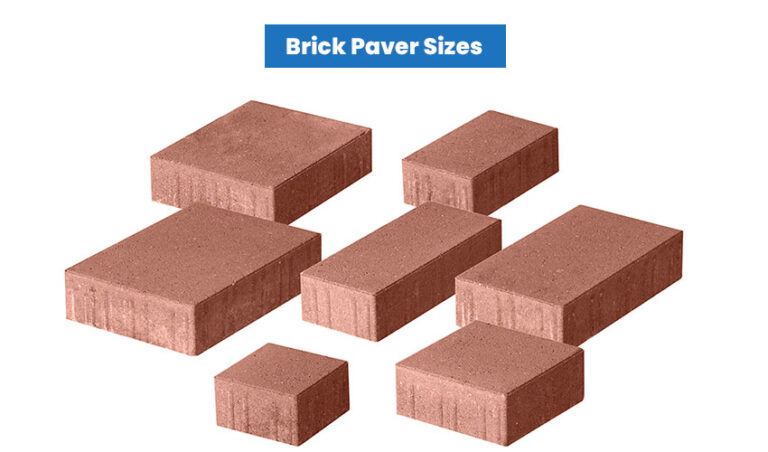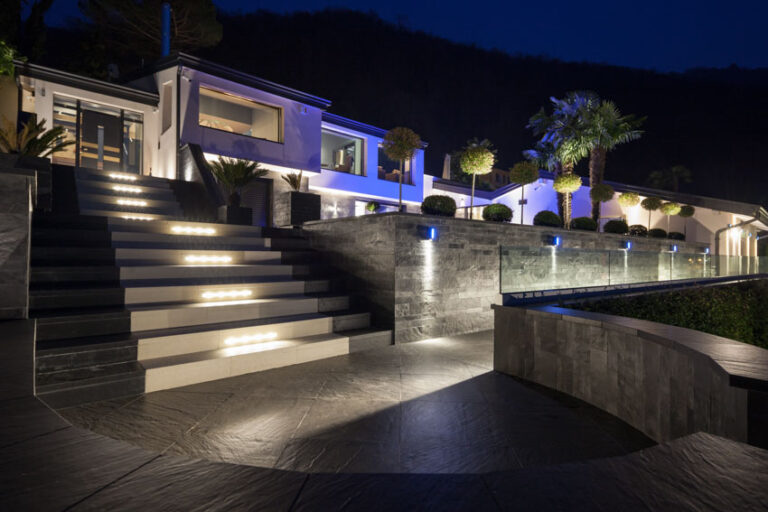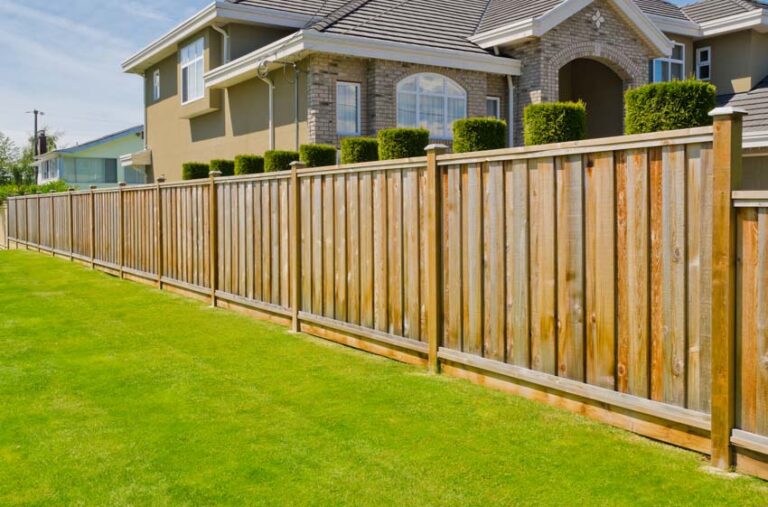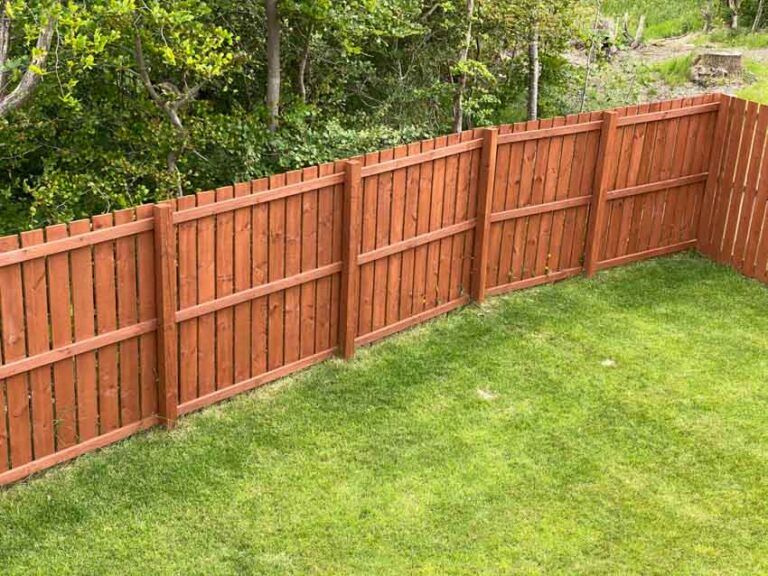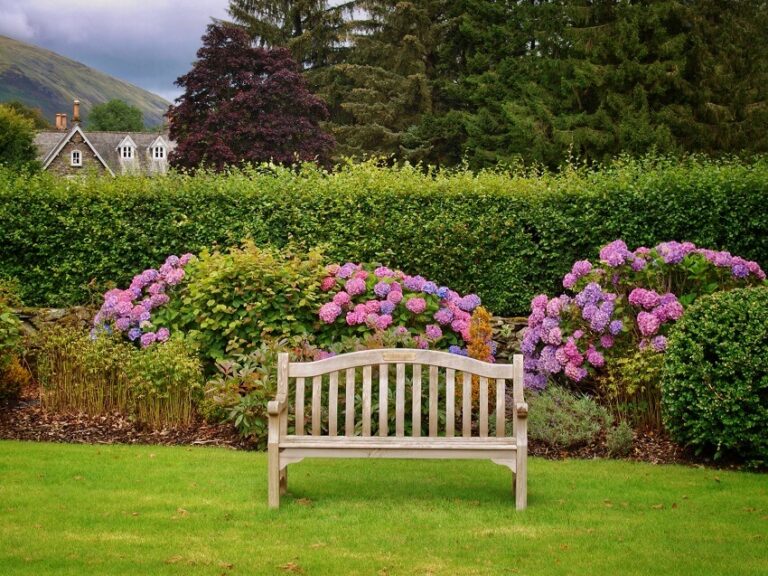65 Beautiful Flower Box Ideas (Pictures)
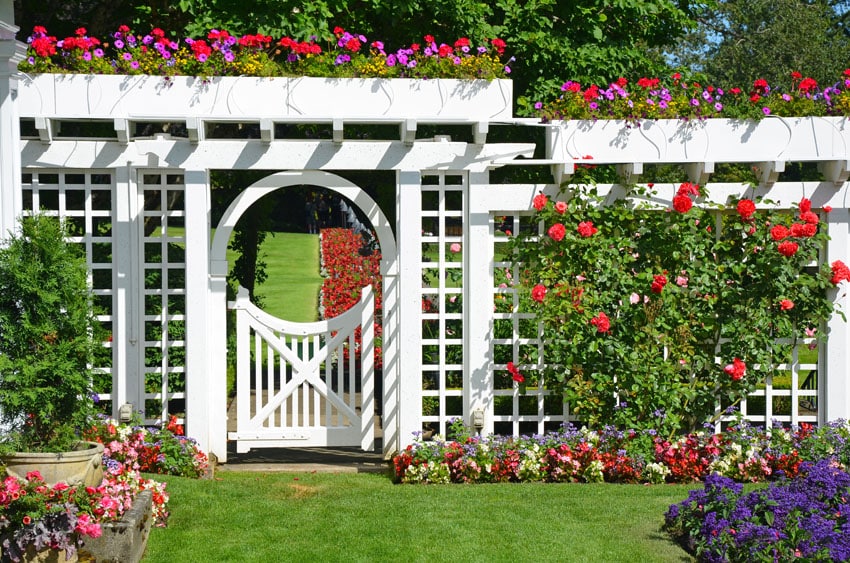 Welcome to our gallery of flower box ideas. Floral containers add a charming and welcoming touch to any space. Allowing you to enjoy a vibrant myriad of color and luscious blooms and foliage, it is a perfect way to liven doors or entry ways, brighten up patios, perk up balconies and decks. From the inside of your backyard, it alters the views you see and from the outside of the house, it softens up architectural features and structural elements. Flower boxes are also perfect for creating a warm inviting feel which will surely refresh homeowners and entice guests. Below we share some of our best flower box designs to provide ideas and inspiration for your own home.
Welcome to our gallery of flower box ideas. Floral containers add a charming and welcoming touch to any space. Allowing you to enjoy a vibrant myriad of color and luscious blooms and foliage, it is a perfect way to liven doors or entry ways, brighten up patios, perk up balconies and decks. From the inside of your backyard, it alters the views you see and from the outside of the house, it softens up architectural features and structural elements. Flower boxes are also perfect for creating a warm inviting feel which will surely refresh homeowners and entice guests. Below we share some of our best flower box designs to provide ideas and inspiration for your own home.
By definition, a flower box is a container used for growing decorative plants in or around the house. It may either be freestanding, built-in in fences or decks or hanging in posts, trellises or balconies. Flower boxes are a form of “small scale gardening” or “container gardening” as plants are grown exclusively in containers instead of the directly planting them in the ground. It is great for beginners as it doesn’t require much work compared to digging garden plots and landscaping.
Using flower boxes have a lot of advantages, and its positive aspects outweigh its very few drawbacks. The main benefit that you can get from this is adds visual aesthetics to any space. It is also great way to take advantage of limited space because there is no need for a vast lawn or area for cultivating plants and flowers. Unlike regular gardens, this allows you to work more comfortably and with less effort needed eliminating the messy work like digging.
When it comes to mobility, flower boxes are portable and can be relocated with ease, so when the extreme cold weather comes, you can bring your plants and flowers indoors to protect them from harsh environmental elements. Design wise, flower boxes are versatile and its wide variety of design choices allows you to choose according to your personal taste and standards. Collections are easier to rearrange and can be managed easily. Aside from the numerous advantages, container gardening in flower boxes can serve as a great family bonding activity and is a good way to exercise one’s creativity when it comes to “Do it Yourself” projects.
Flower boxes are also affordable and can be bought as ready made containers in local home improvement stores and suppliers.Typically costing around $3 to $30 for plastic containers, $5 to $100 for the more decorative ones such as stone, ceramic. There are also high end options which can range anywhere from $100 to $1400, but the low to mid selections already can already suffice. DIY basic wooden flower boxes can cost anywhere around $30 to $300.
Flower boxes are also beneficial to plants and flowers because diseases and pests do not spread and are easier to treat compared to plants cultivated in garden. There is also no need to worry about animals destroying your plants because flower boxes can be placed at a height which is unreachable.
The negative features of flower boxes is that it has a limited size of growing space which means the plants and flowers need more frequent upkeep. Limited soil is equivalent to limited moisture, thus requiring to be watered and fertilized more often than the usual.
In this gallery we will be discussing the most popular flower box ideas to help you choose the best option for your needs.
 Best Flowers for Flower Boxes
Best Flowers for Flower Boxes
Flowers which are highly suitable for flower boxes are the “bedding types” or annual flowers. They are appropriate for container gardening because they are easy to grow. Annual flowering plants usually live for one summer but booms for an entire season.
Here are some of the best flowers which can be used for window gardens:
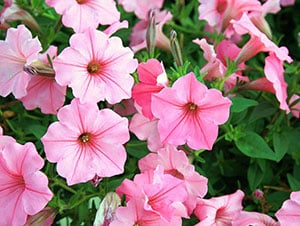
There are different petunia varieties such as the large flowers which are perfect for pots and planters, small flowers which are highly suited for harsh weather and smaller blooms which are good for hanging baskets. Petunias need partial shade to full sun in order to grow. Maintenance requirements include regular watering for constant moisture and well drained potting soil.
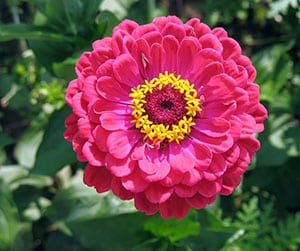
Zinnias also have different petal arrangements, some are single petalled while others have layered blooms which give them a more full shape. Profusion series zinnias grow up to 12 inches tall while the Zahara series can reach up to 18 inches in height. These flowerering plants are easy to grow and need full sun for best growth which makes them ideal for flower boxes in balconies or sunny window containers. Maintenance requirements include a well drained soil with consistent moisture.
Nasturtium – Characterized by bright to soft shades of red, pink, orange and peach, Nasturtiums are ideal for beginners because they are easy to grow, blooms quickly and can thrive even within little neglect. These flowers can be grown in partial shade or full sun and can survive even cool conditions. They usually grow 6 to 12 inches tall while the veining variety can trail 3 to 6 feet.
Nasturtiums are usually grown by direct seeding and are very easy to work with. Its varieties include: Alaska (jewel toned flowers), Black Velvet (mounds of deep mahogany colored flowers over a light green foliage), Cobra (rich red flowers with deep green leaves) and Milk Maid (pale cream and buttery yellow flowers).
Million Bells – Also known as Calibrachoa, Million Bells are a popular choice for blossom containers because they look good whether they are hang, placed in containers or mixed with other flowers and plants. They come in a wide array of colors which range from pastels to rich rich shades of red, orange, pink, purple and yellow.
Million bells grow up to 8 inches tall and usually cascades when fully grown. It usually double blooms and produces small blossoms which resemble petunias. One advantage of growing Calibrachoas is that they can withstand heat and cold temperatures. They grow best in full sun and requires a well drained potting soil, regular watering and constant feeding of fertilizer.
Impatiens – Also know as “Busy Lizzies”, Impatiens are well loved choices for flower boxes because its colors can instantly brighten up any outdoor space. These flowers are available in different sizes, growing 8 to 16 inches tall. Colors range from white, red, peach, lavender, shades of pink with yellow splashed or deep red leaves.
Unlike other flowers which need the full sun to grow, Impatiens only need partial sunlight and can grow in shaded areas which make them highly appropriate for cool summers and mild winters. Maintenance wise, these flowers need to be watered early in the morning so they have time to dry before the evening, while fertilizer feeding is only needed every other week
Angelonia – Angelonias are annuals which bloom through all seasons. It comes in different colors such as blue, purple, pink, red and white and grows up to 1 to 3 feet in height reaching its peak of 18 to 24 inches during summer.
There are a variety of Angelonia species to choose from ranging from dwarf plants to large blooms. Its growing habits are also diverse because aside from growing upright, they also grow horizontally and spread out nicely to fill garden crates and gardens. These types of flowers are drought tolerant and needs a full sun to grow. It is highly suitable for container gardening because it requires low maintenance.

They are popular for cottage gardens and give off a traditional old fashioned feel and work well for adding as stunning emphasis to patios, windows, balconies and entry ways. Just like most flowers for container gardening, it requires a well drained potting soil and enough water to reach the roots.
Gerbera Daisies – These are annual or perennial flowers which are usually green, orange, pink, red or white in color with gold to chartreuse leaves. The Gerbera Daisy usually grows at a height of 6 to 12 inches and is suitable for container gardening because it is easy to maintain. Gerbera daisies need full sunlight to grow.
The flower is native to Transvaal, South Africa and as it needs a warmer temperature, it should be planted after spring frosts have gone. Gerber Daisy flowers love full sun with sandy soil for best results.
Begonia – Begonias are considered a favorite for bloom boxes and gardens because of their ruffled shapes and multiple colors. Usually 6 to 12 inches tall, these plants are available in single or multiple colors of orange, pink, yellow or white.
In terms of maintenance,begonias must be watered lightly as they do not grow well in wet soil. They need partial shade and indirect sunlight in order to grow. Avoid direct exposure to sun or consistent shade.
Other options for plant boxes are: Verbena, Pansies, Azaleas, Calla Lily, Celosia, Chamomile, Chrysanthemum, Daffodils, Dahlia, Dianthus, Geranium, lavender, Marigold, Morning Glory, Roses, Primrose and Peonies.
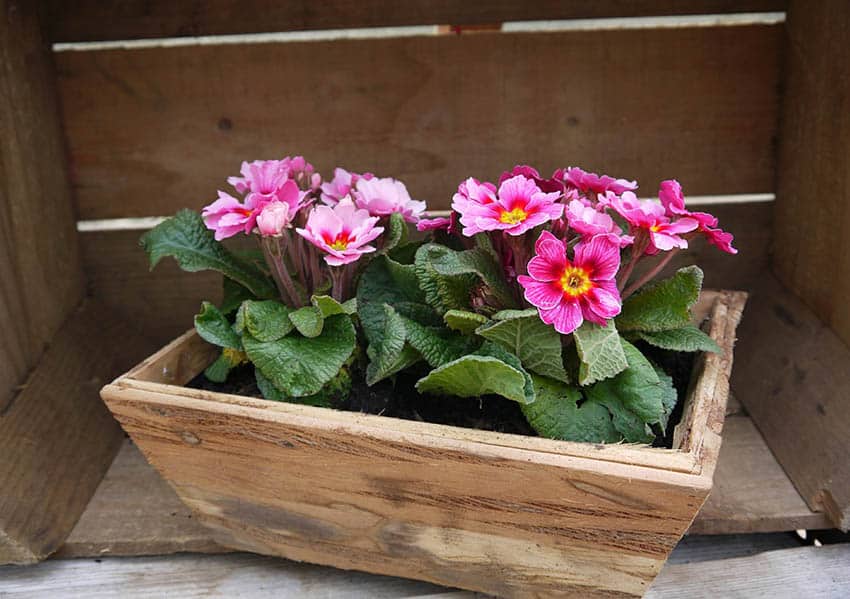
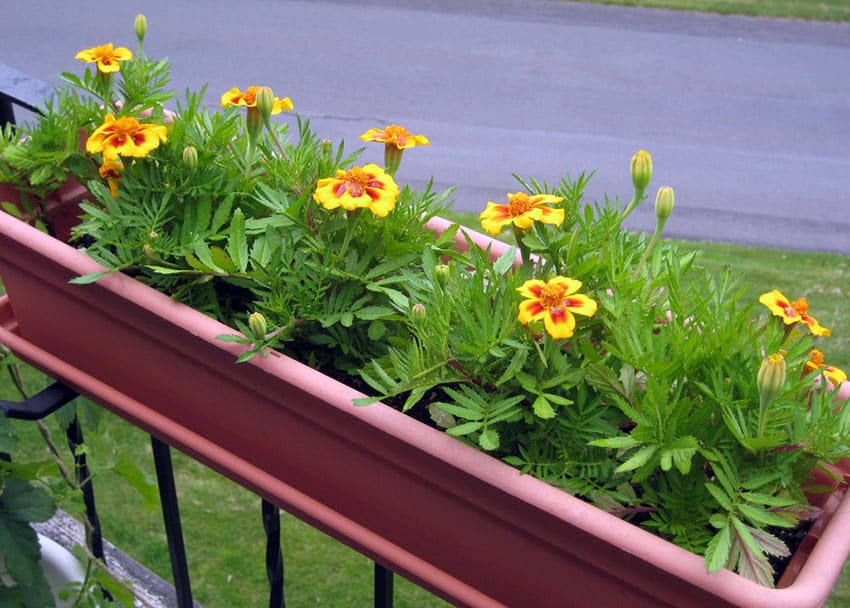
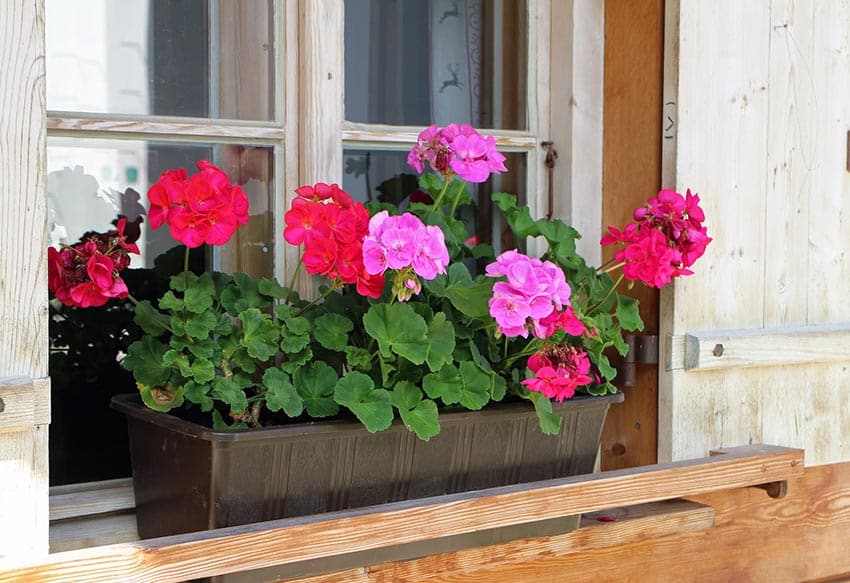
Outdoor Window Planters
Flower boxes are available in a variety of shapes, sizes, colors and materials. Most of it are readily available in local home improvement stores at an affordable price. When it comes to choosing the right material for your window garden, there are several factors that must be considered namely : value for cost, ease of maintenance, aesthetics and climate. Climate is significant because flower boxes and other plant containers are constantly exposed to weather changes, so make sure that you choose one which can withstand natural elements for it to last a lifetime.
Here are the most common materials used for flower box ideas:
Terra cotta – Terra cotta is made up of kiln dried clay and is loved by many because of its warm reddish brown color. It is readily available in most stores and is also very affordable. Although suitable for both indoor and outdoor use, terra cotta flower containers are more fragile than other materials because it is permeable. It is very versatile because it has no limit in size and its earthy appeal makes it a popular choice for rustic themed gardens, patios and houses.
Ceramic – Ceramic is a type of stoneware which is made up of finely textured clay. Since it is subjected to oven drying, its porousness is reduced along the process making it vulnerable to moisture and other elements. Ceramic flower boxes are not ideal for areas with a cold weather because they have the tendency to crack. It is visually appealing because of its shiny glazed finish.
Concrete – This type of material is very durable as it can handle exposure to any outdoor elements. Aside from being heavy duty, concrete petal pots have a distinct appeal because it looks great when it ages. Concrete is a good choice if you want to blend your flower boxes with the architectural form of your house and it is also highly suitable for building planters along the borders of a pathway or sidewalk.
Stone – Natural stone flower containers are very ornamental and ages beautifully with changes in color. Aside from having good insulation, it is very durable. It is very expensive and its heavy weight makes it hard to move around.
Fiberglass / Resin – A modern alternative for traditional flower box materials, fiberglass or poyethylene is lightweight but durable. Resin is usually molded to simulate the appearance of natural materials such as stone, clay or terra cotta. It closely resembles the real thing, making it impossible sometimes to know whether they are imitations unless you touch them. Fiberglass and resin window sill planter boxes can withstand any weather and can last for seasons.
Plastic – Plastic flower boxes are probably the cheapest form and it comes in all shapes, colors and sizes. However, visually they lack an aesthetic appeal because they look less realistic. This material heats and cools quickly so that plants are not damaged easily even when exposed to a sunny area. Since it is lightweight, plastic flower boxes and planters are easy to relocate within the different areas of the house.
Metal – Metal flower boxes include aluminum, steel, cast iron, copper or zinc. Design wise, it is versatile as each different type shows off a distinct look – steel has an industrial feel, cast iron has a classic look, copper has a vintage vibe and zinc is perfect for contemporary. Metal does not chip and crack but heats up when exposed to extreme heat. Although prone to rusting, some homeowners still prefer metal flower boxes and planters because of its distinct look as it weathers.
Wood – Wood planters are elegant and highly preferred because of its natural beauty which is incomparable to any other material. For a more thorough discussion of its positive and negative features, continue reading below.

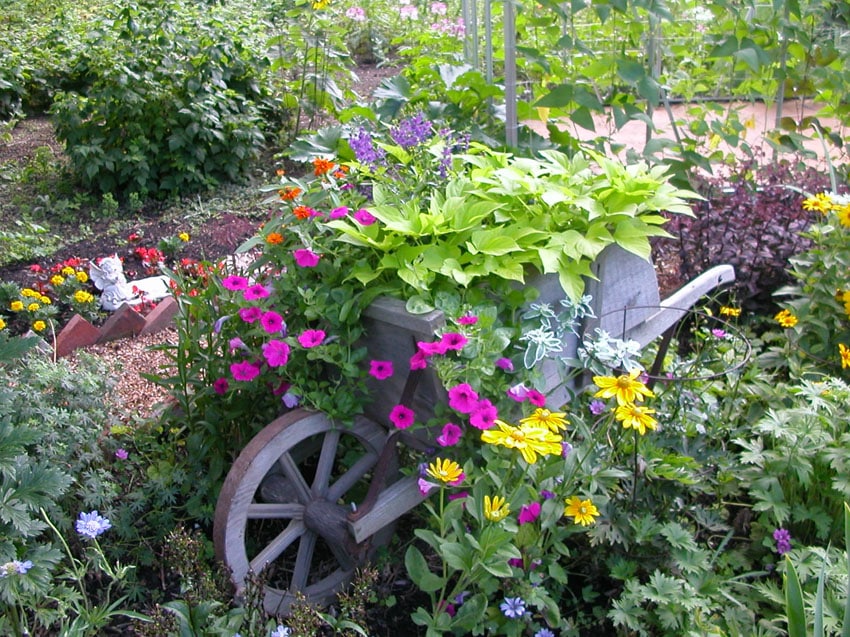
Black resin flower box – Wayfair
This black plastic planter box is perfect for outdoors because it is highly durable, waterproof and resistant to fading and insects. The radiant color of mixed greens and yellow blooms add contrast to the dark neutral color of this flower box.
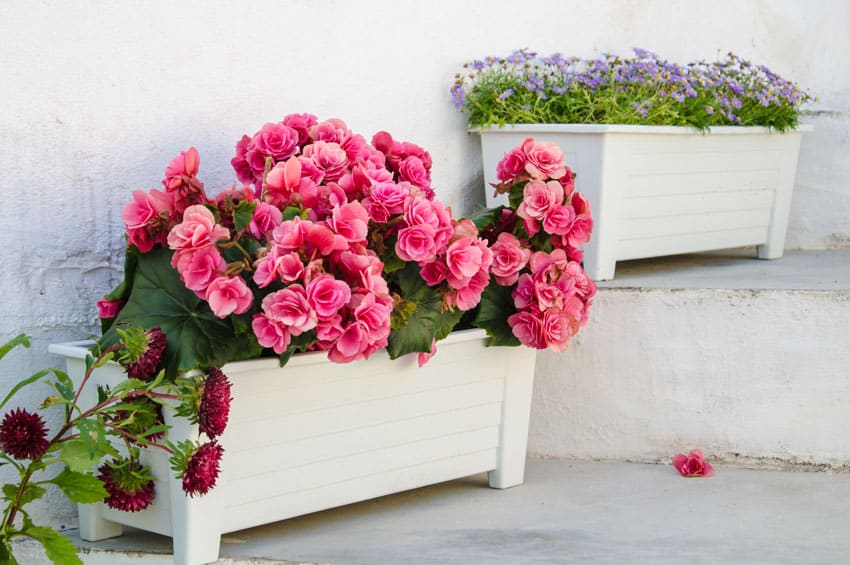
Wooden Garden Boxes
Wooden flower boxes are well loved for their natural aesthetics. It is available in a variety of colors and can be combined with different garden elements such as trellises, pergolas, lattices or seating.The benefits of using wooden planters include durability, resilience, versatility and cost effective. It also protects plants from extreme heat during summers because it has good insulating properties. Its downside is when it is exposed to outside elements, it becomes prone to warping and pest damage, thus requiring regular upkeep. To avoid such damage, make sure that wood is properly treated before use.
The most common species used for plant containers are Cedar, Oak, Teak and Redwood because they are highly resilient when wet and resists warping and insect infestation. The best option for wooden flower boxes is Cedar because it has natural oils which make insect and rot resistant. Cedar flower boxes and plant containers are guaranteed to last for 20 or more years and is also naturally beautiful and elegant. Redwood is also an excellent choice because it also lasts long and has a rich color, however it costs more.
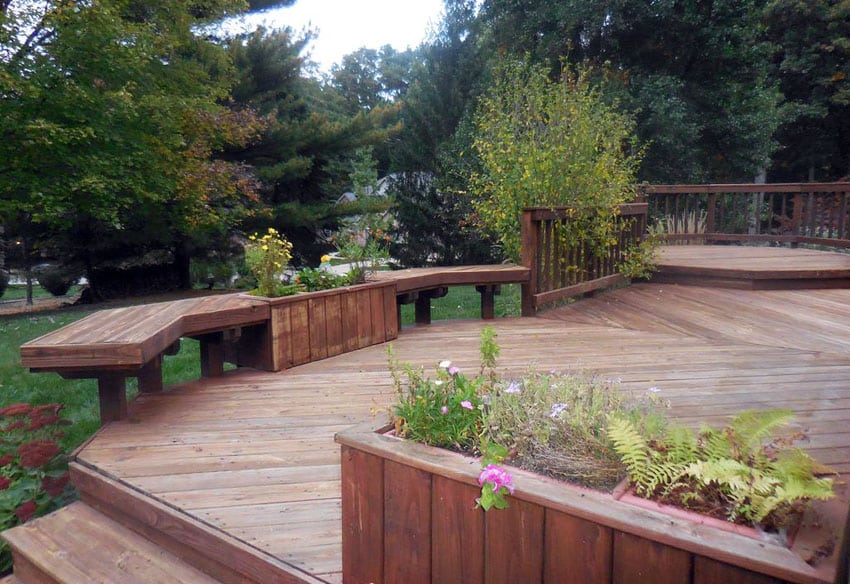
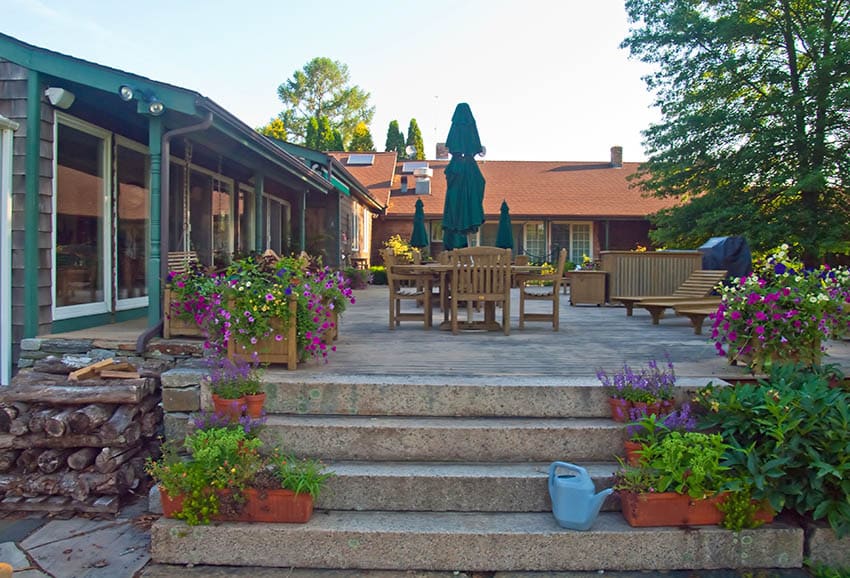
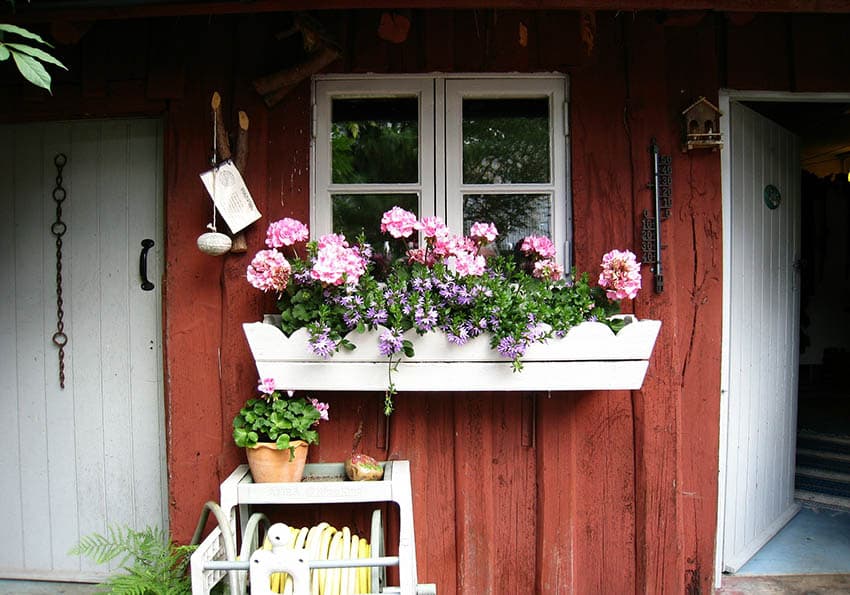
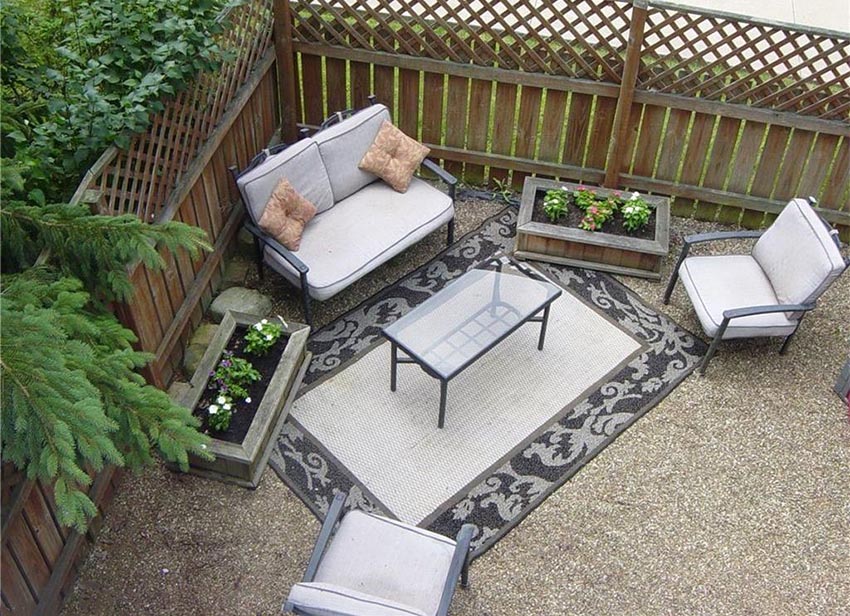
Acrylic Bloom Box
Acrylic is a form of clear plastic and has the same properties. They are more durable than ordinary black plastic containers and are long lasting in quality. The beauty of acrylic containers is that it does not rot and break during the cold weather. It is also lightweight which makes it highly suitable for areas where weight is an issue – such as balconies, windows or railings. Most acrylic flower containers and planters also simulate the appearance of natural materials. Its available designs are mostly modern or contemporary and can also be custom painted every 10 years. Aside from being insulated, it usually comes with drainage holes.
Acrylic flower box – Source
This acrylic plant box mimics the appearance of natural stone. It is weatherproof and works perfectly for outdoor spaces where weight is an issue, such as balconies, decks and patios.
White Resin Planter Box – Source
Resin planter boxes are more durable than typical planters and can support up to 150 lbs of weight. Design wise, it is versatile and can be used with a variety of flower colors and species.
Copper Floral Caddy
Copper flower boxes have a distinct charm because of their rich color which makes it ideal for classic and vintage inspired gardens. It increases in beauty as it ages because of the natural green patina it develops giving it a different look, color and texture from year to year. Copper flower boxes are highly decorative and are often used as “cache pots” to house ordinary plastic plant containers. It is durable and does not break, chip or crack. Since it is purely metal, one of its drawbacks is it heats up in strong sunlight which causes the soil to dry up causing potential damage to the roots. It also requires drainage holes because it is non porous and has the tendency to rust if exposed to rain or too much water. Some copper flower containers are also heavy which make it less feasible for relocation.
Copper flower box – Source
Shown above is a metal flower box in a unique copper finish. Aside from being durable and resistant to outdoor elements, this type of plant containers are perfect for adding a touch of elegance and sophistication to window sills, patios and balconies.
Botanical Boxes for Deck Railing
Flower boxes for railings add a garden to a deck, balcony or porch. It can either be installed along the length of your deck railing or in the corners. It is set on top or rests in brackets or hardware mounted in railings. Flowers can be directly planted in it or pots can be placed inside. The main advantage of putting flower boxes in deck railings is it enhances beauty to your home. It also adds height to railings for privacy. These type of flower boxes are available in a variety of sizes, styles and materials which make it flexible in terms of design application.
Some tips to remember when buying flower boxes for deck railings : measure the length of the open railing space and the width of the top of the railing to make sure that the planters fit perfectly in them. Also remember that the railings have to be secure, stable and can support weight because the flower boxes tend to get heavier after watering.
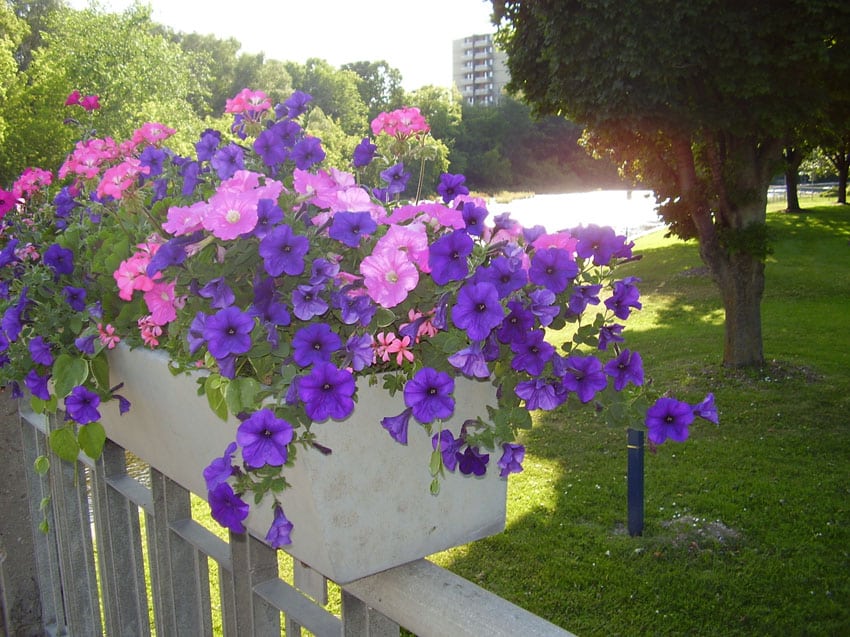
Teak Fence Planter Flower Box – Source
Elegant, sturdy and sustainable, this teak flower box can be hang on fences or mounted on house sidings and windows. The addition of sunflowers add warmth to the overall look of this wooden fence.
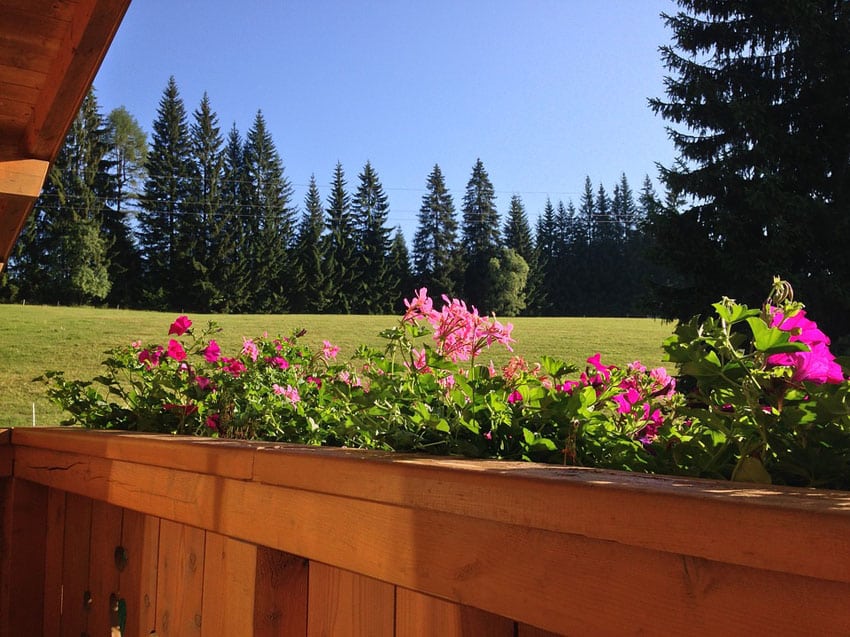
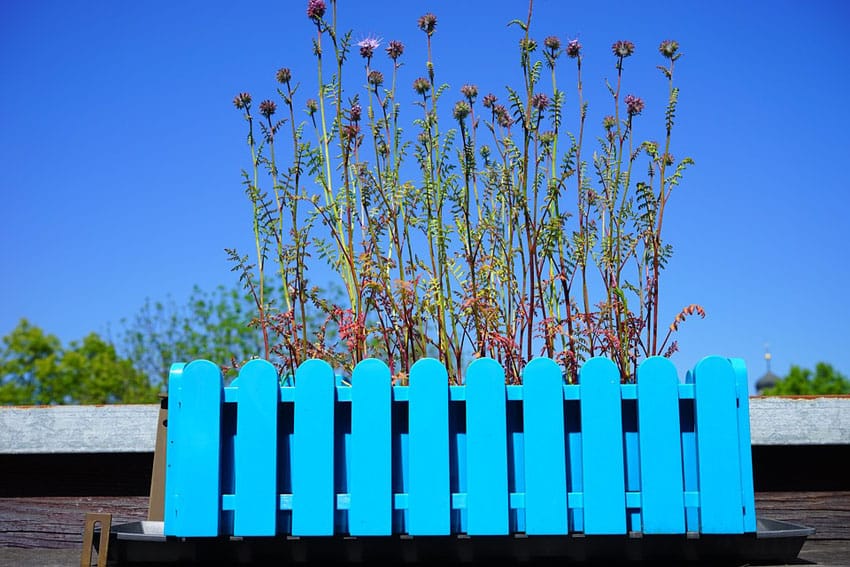
Rectangular Floral Box
Rectangular flower boxes are perfect for growing mounding and cascading types of flowers. Its shape can accommodate a larger amount of plants compared to other types of flower boxes. It also allows you to grow an extensive variety of flowers. Rectangular flower boxes usually come in a wide range of materials such as wood, metal or plastic and suits both contemporary and traditional garden and outdoor spaces.
Rectangular metal flower box – Source
Rectangular metal plant boxes are excellent additions to minimalist gardens and outdoor spaces. It becomes even more beautiful as it ages because it develops patina and a rusted weathered look over time.
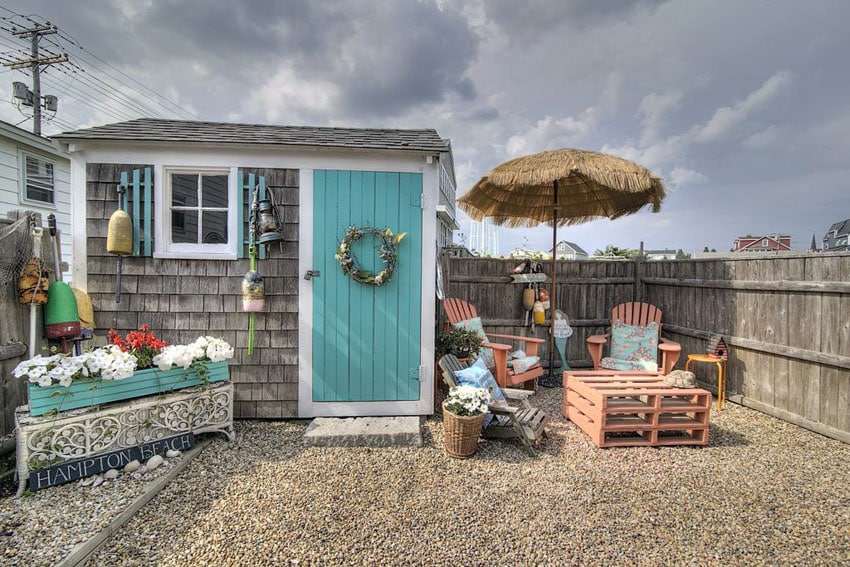
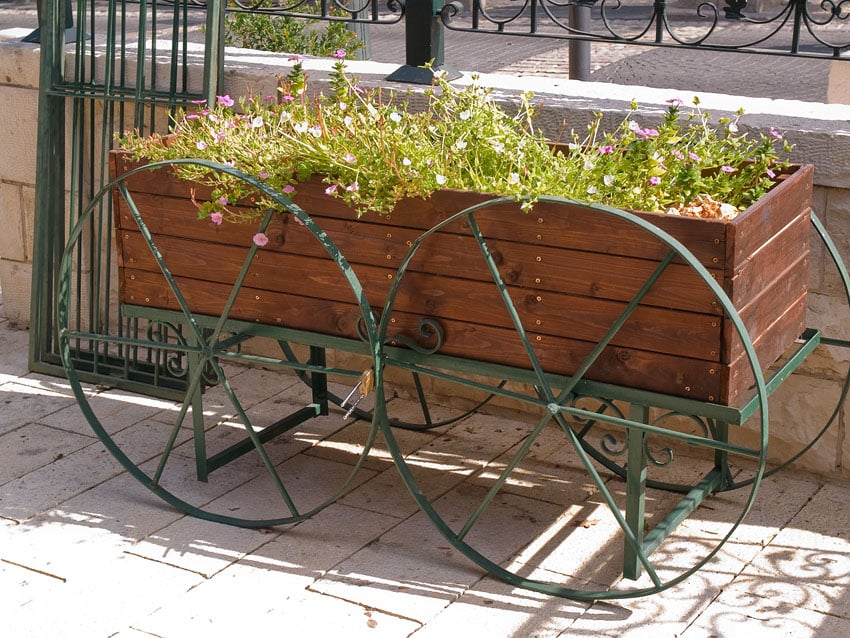
Hanging Greenery Holder
Hanging flower boxes make pathways, entrances and porches more warm and inviting with the visual aesthetics of a shower of color and flora. This type of flower box can be used to cultivate a single variety of flowers or a layered composition of plants and other perennials. It can be hang in individual or groups and set at a shoulder level or above the head height in stable structures. When using hanging flower boxes, make sure that tit is securely attached to structures which can hold extra weight as they tend to become heavier when watered down.
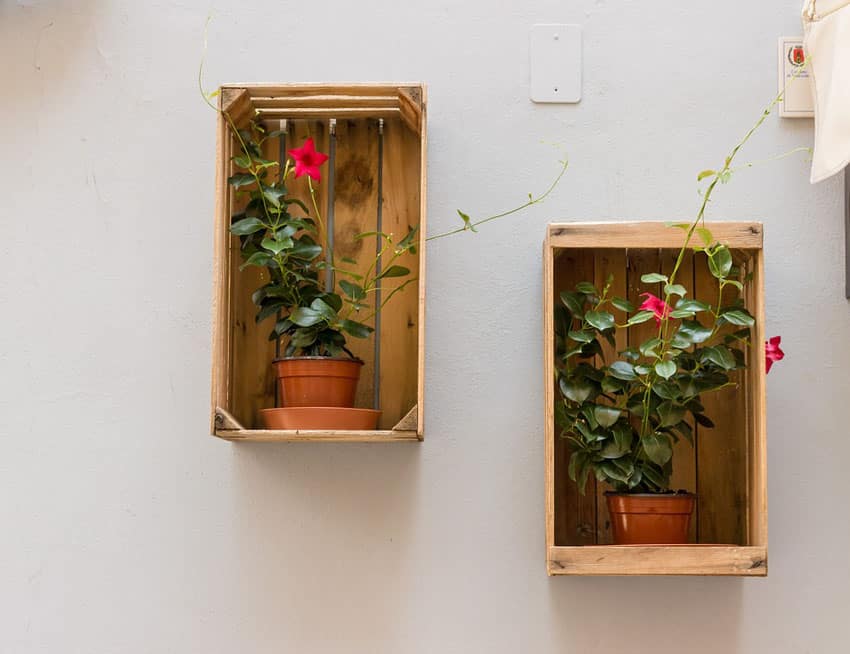
Antique copper flower box – Source
This antique copper fish kettle with a brass handle is the ideal accessory for vintage themed houses. Its size can hold even large flowering plants such as the Poinsettia which is shown above.
Blossom Caddy for Decks
Flower boxes for decks are freestanding plant containers which are used to add charm to deck, balconies and porches. It may be placed on sides or corners and may be used either as an accent or a focal point for any outdoor living area.
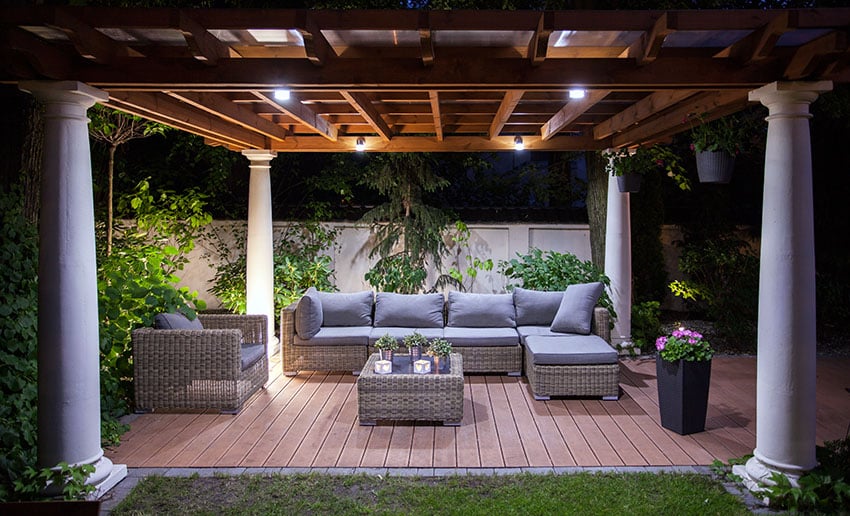
Wood wishing well flower planter – Source
This wishing well Fir wood planter can work as a stunning focal point for Rustic inspired gardens.
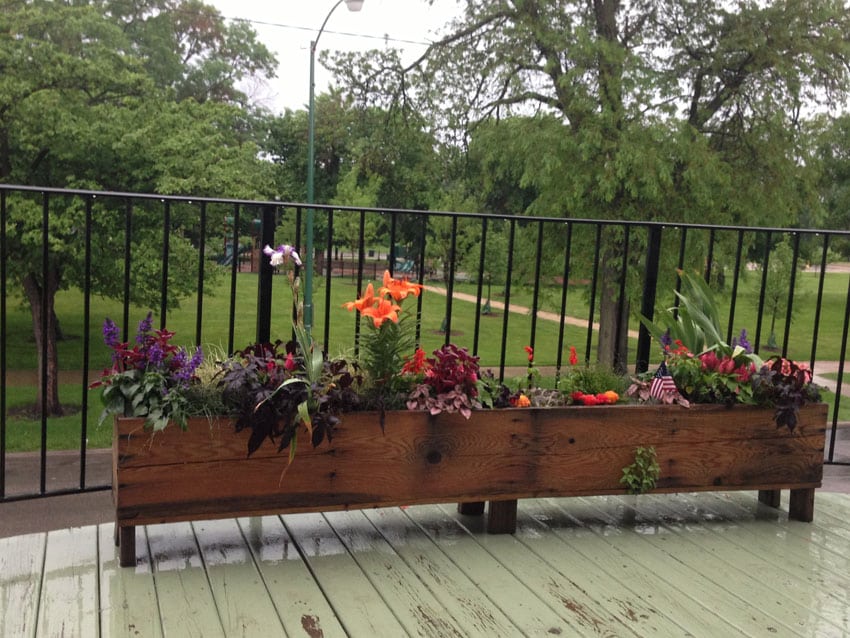
Patio Garden Crates
Patio flower boxes are ideal for homeowners who have a small to no backyard space. It provides an opportunity to grow flower gardens in the limited space you have while providing a relaxing environment and fresh vibe to your outdoor entertaining area. Patio flower box ideas come in a wide variety of shapes and sizes from decorative planters to wall hanging boxes with rustic stone, concrete or wood, to stylish contemporary materials such as acrylic or metal.
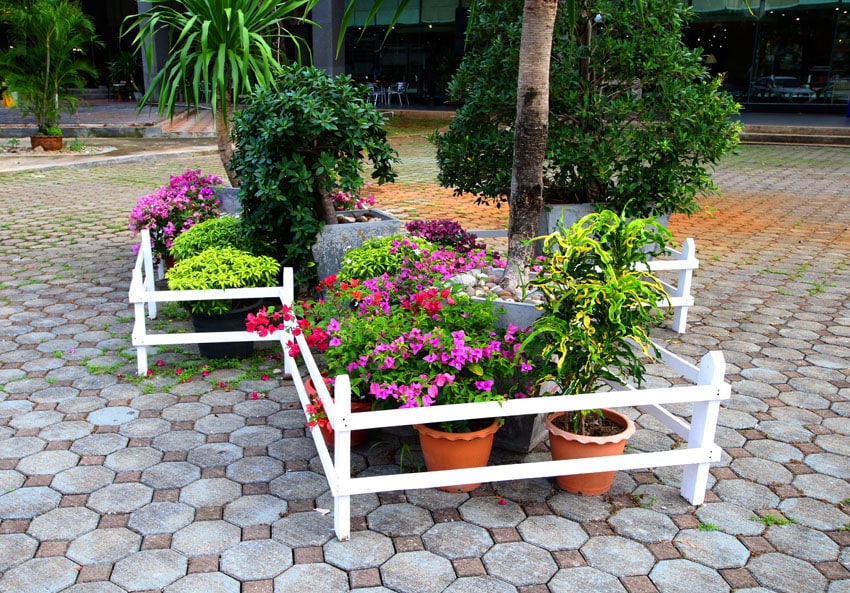
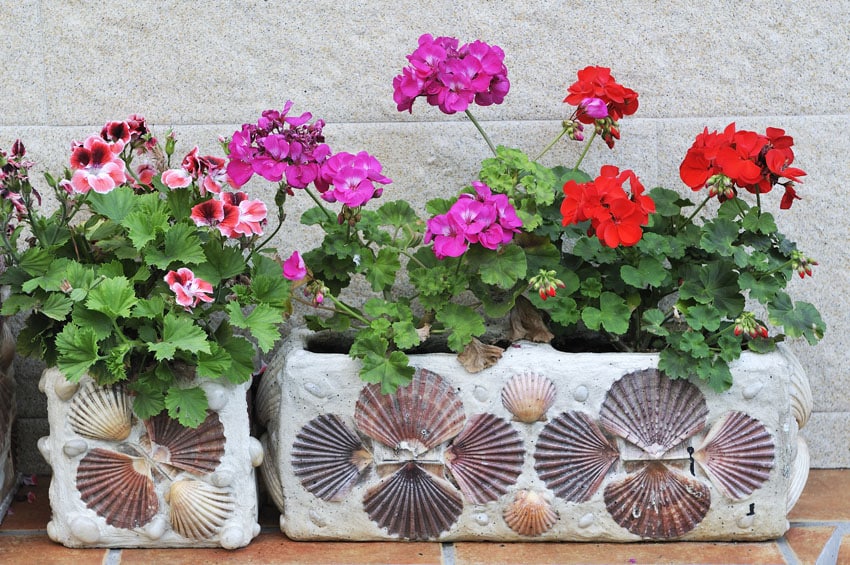
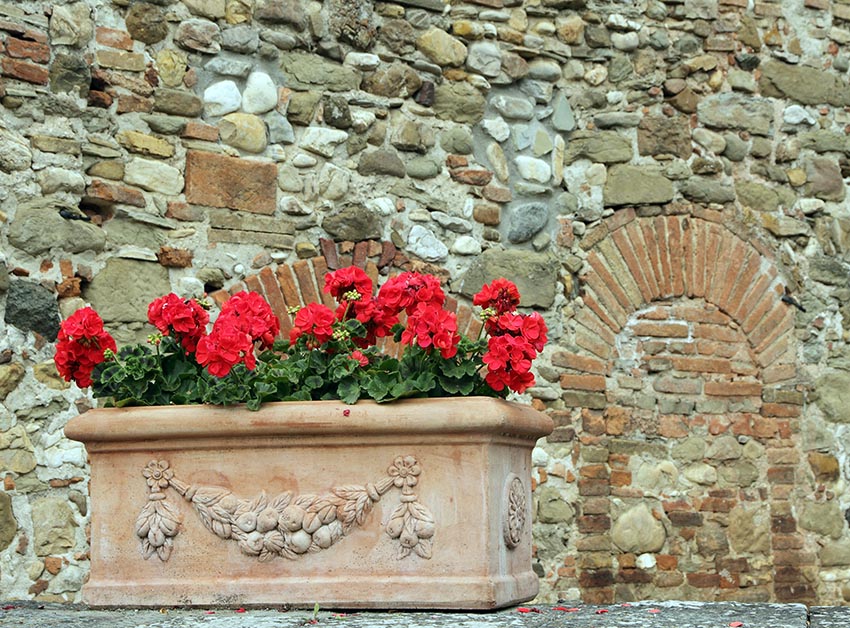



Large Outdoor Planters
Large flower boxes are often used as focal points for gardens. Aside from being able to hold a large amount of foliage, this work best for growing an interesting mix of small flowers and plants. The key to designing gardens with large flower boxes is strategical placement – like a continuous sidewalk strip, the middle of a landscape or a vertical wall feature in a garden. However, its downside includes being costly and heavy which makes it difficult to relocate.
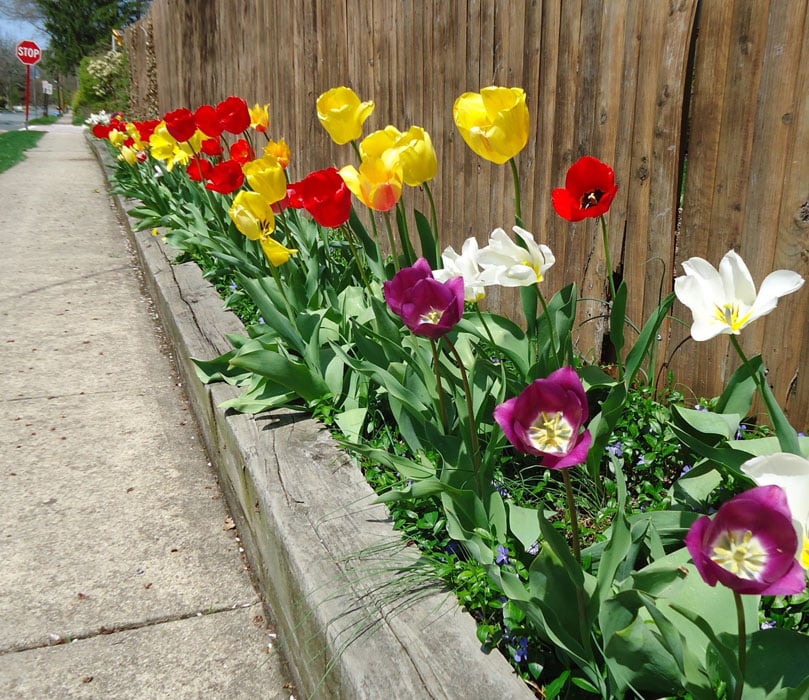
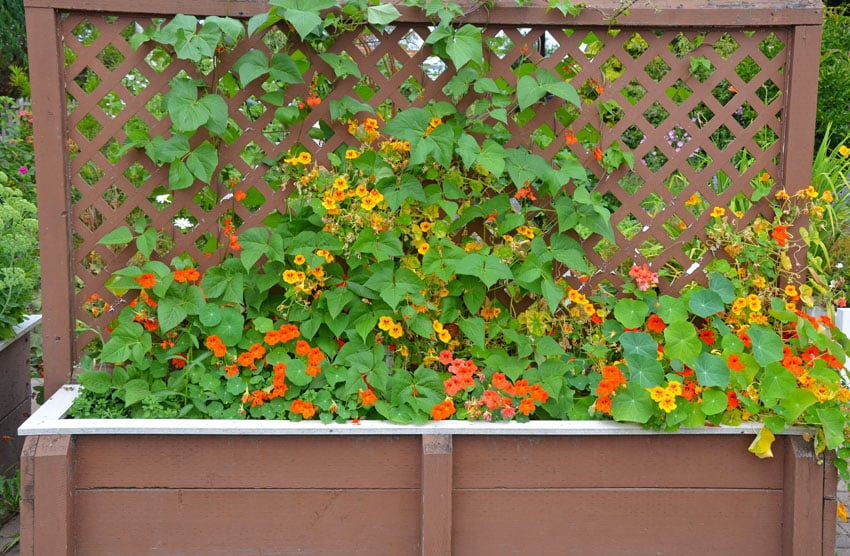
Fence Petal Planters
Fence flower boxes are plant containers which are used to add garden to fences. It is a unique approach to expanding your garden and provides a wise way of taking advantage of a commonly unused space. Fence flower boxes do not only add charm to the perimeter of the house but it is also a solution to covering up unsightly views within your backyard as it directs the attention to the growing foliage. It is also a unique way to add privacy to outdoor spaces.
Fence flower boxes are usually in the form of vertical gardens and can be fixed in posts and rails of fences. They may be bought in stores and come in different shapes, materials and designs or can be creatively made at home. They are perfect “Do it Yourself” projects and provides an opportunity for recycling and repurposing. Used crates, old wood pallets, cans, bottles and other salvaged materials may be used as fence flower containers. (Visit this page to see more fence planters.)
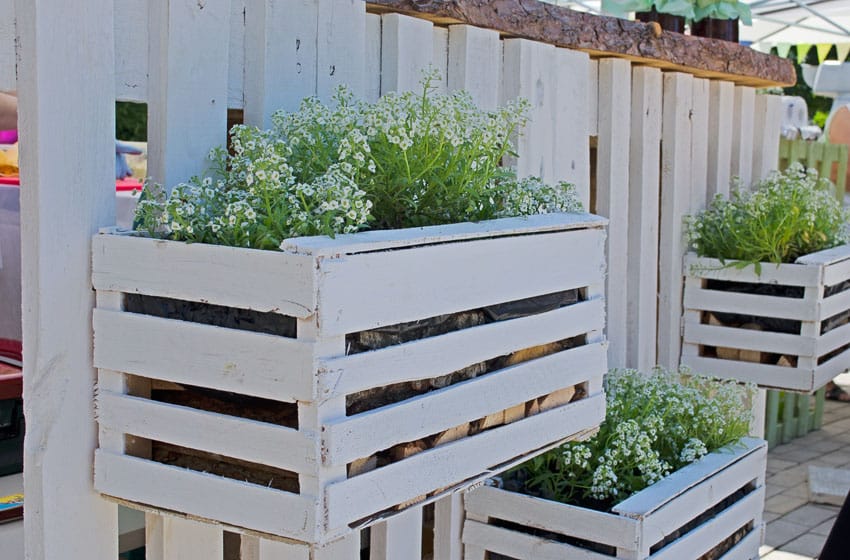
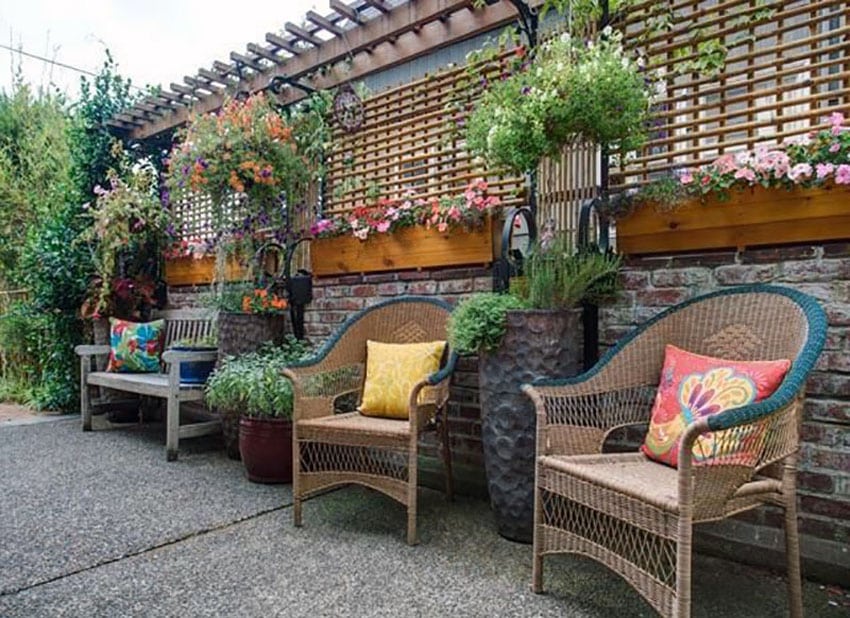
Balcony Flower Pot Box
Adding flowers to your balcony by using a flower box is a beautiful way to enhance your home from inside and out. Not only will flowers enhance the ambiance of your balcony, they also can drastically improve your home’s curb appeal from the street level.
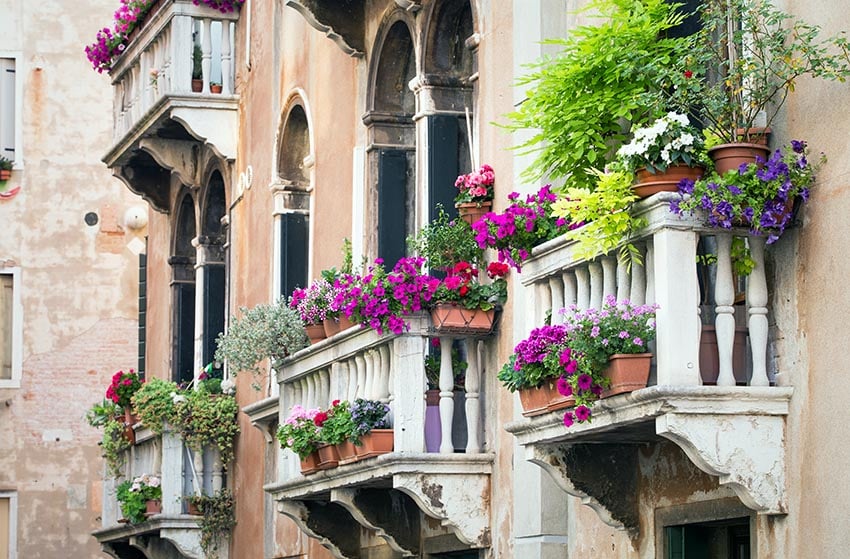
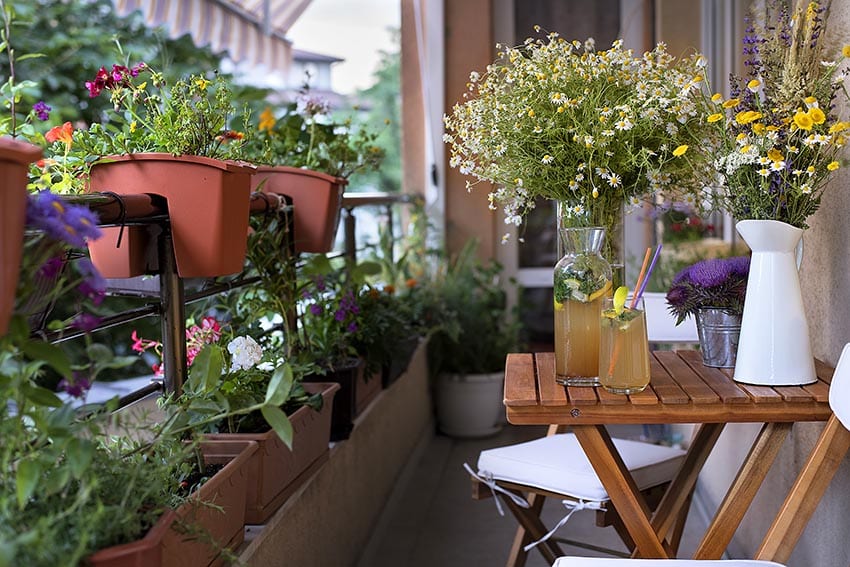
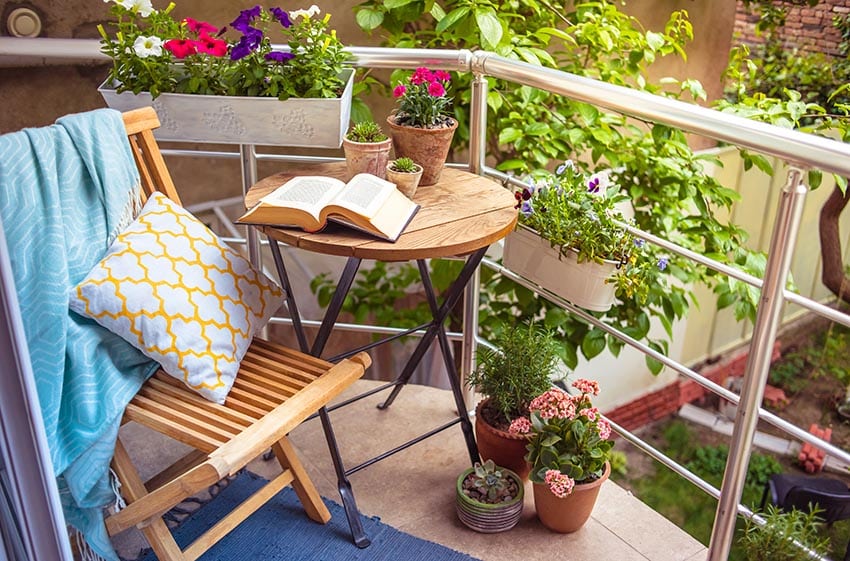
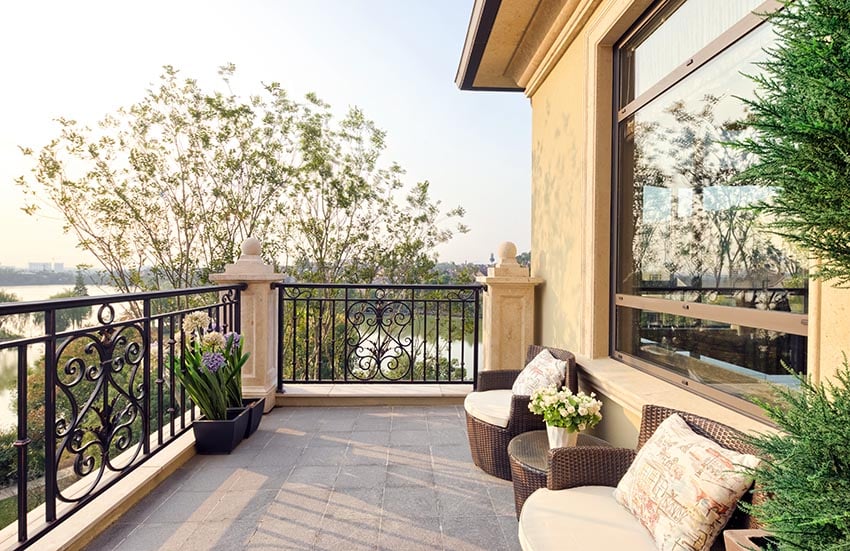
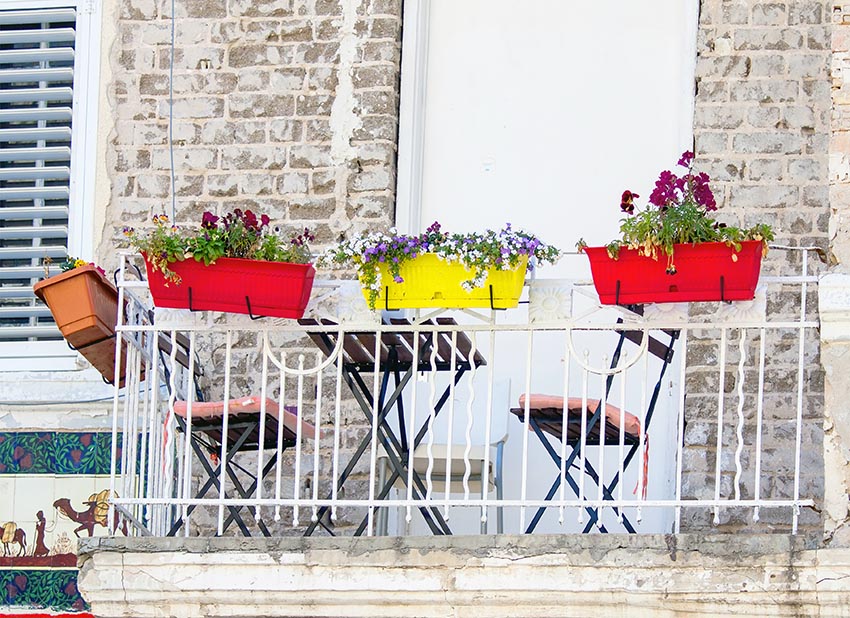
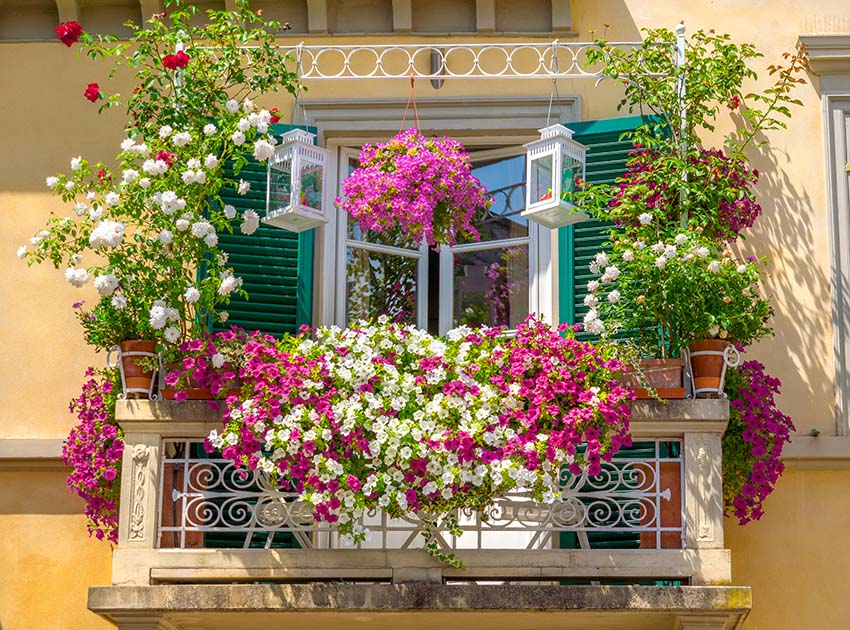
Building a Botanical Box
Creating your own flower box from scratch is an easy “Do it Yourself” project that does not require much time and effort to accomplish. Aside from being affordable, building your own flower box allows you to customize according to your needs and decorate according to your personal taste.
In this article, we will be teaching you to make your own wooden flower box. This DIY tutorial will be using a basic rectangular design which is versatile for different applications. Here are the needed materials and steps to build a flower box:
Materials:
- Wood boards – Cedar boards which are 1 inch or 2 inches thick, length will depend on the size of your flower box
- Wood cleats
- Screen or Vinyl liner
- Galvanized screws
- Brackets
Tools:
- Saw or electric saw
- Screwdriver
- Electric drill
- Tape measure
Steps in Building a Flower Trough:
Decide on the size of your flower box. To determine the size, consider the following factors: the amount of plants and flowers you will be growing in it, the number and sizes of planters/ pots/ containers you will be placing inside (if any) and the size of the area you plan to put it. Remember, that its size must be balanced and proportionate to your garden, deck, patio or balcony.
Cut and assemble the boards. Before cutting your boards, here are some tips you need to keep in mind when buying wood. First is to make sure that you go with wood species that are resilient when wet and can withstand harsh outdoor elements. Go for untreated cedar because aside from being durable, it is unsusceptible to rotting and insect resistant too. Cedar also lasts long despite being exposed to sun or rain. If you have a much bigger budget for the project, you can also use Redwood. When cutting your boards, use a measuring tape to measure each size you need. Mark your boards using a pencil then use a saw to cut it into pieces. Make sure to cut it straight or if you are a bit hesitant in doing so, you may always ask your supplier to cut the wooden boards for you. You will be needing 2 pieces for the sidings, 1 piece front panel, 1 piece back panel and 1 piece bottom floor board.
Fasten boards together. Create pilot holes at the end of 2 boards (1 side panel and front panel) which you will be connecting. Place them together at a 90 degree angle, and drill 3 holes which are equally spaced from one another at ¾ inches from the end / edge of the front board. The purpose of pilot holes is to keep wood from splintering. After drilling the pilot holes, line the boards together then fasten using galvanized screws. Use an electric drill or screwdriver to attach screws to boards. Repeat the same process for the remaining boards (1 side panel and back panel). Once fully attached to each other, you now have a box like structure which is open on top and below. Measure the inside length and width to determine the size of your bottom board. Attach the bottom board to your box by using galvanized screws and an electric drill.
Add cleats and drainage holes. Cleats are important as it adds a profile to your flower box and it ensures that it doesn’t damage floors or railings. Drainage holes, on the other hand, are for preventing plant diseases such as “soggy feet” which is caused when the roots sit in wet soil for too long. To add drainage holes, simply flip your flower box over then drill 4 to 5 holes with a minimum diameter of ½ inch.
Insert a liner. Cut a piece of vinyl or nylon screen to fit the bottom of the flower box. This will hold the dirt and gravel in place. Remember to cut drainage holes in your liner too and make sure that they line up together. Use nails to fix it in place.
Add finishing touches. Sand any rough edges using sandpaper or a sander. Finish it off with a wood stain or paint of your choice, or if you want you can leave it unfinished for a natural look. Leave the inside part to avoid contamination.
Cultivating Flowers in a Window Ledge Planter
After building your very own flower box, it is now time to put in the flowers. Flower boxes are great for beginners as it is a very easy way to start gardening.
What you need:
- Flower Pots – If you do not want to plant your flowers directly on the plant box, you can use pots and containers but make sure that they have drainage holes
- Potting Mix
- Gravel
- Flowers
What to do :
Fill the flower box with some gravel for drainage. Then put the potting mix on top, keeping the flower box about ⅔ full. Sit plants in the flower box and decide on the arrangement. Transfer your plants from the pots to the flower box. Gently loosen without disturbing the roots and nestle them into the soil. Make sure that they are planted the same level they were in their original container. Add soil between the plants and gently firm.
Some arrangements you can consider:
- Single Accent – composed of a single type of flower for a pop of solid color.
- Multi-color – A mix of different varieties of the same flowering plant. This ensures a colorful mix but with a uniform texture.
- Mixed Arrangement – This is composed of different types of plants and flowers. A combination of varying heights, color and texture. The perfect formula for a mixed arrangement is to choose a variety of plant or flower which is tall for height, a bushy plant for width and a trailing vine or flower which spills over the edge.
- Round Design – Tall plants are placed at the center and trailing plants are placed around it.
- Front Facing Design – Short plants and flowers are placed in front while the taller ones are at the back.

- Do not skimp on drainage. Flowering plants need a well drained soil so make sure that punch enough holes on planters or buy containers that have them. Drainage holes can go up to 1 ½ inches in diameter
- Do not use pressure treated wood for flower boxers and planters. This type of wood may contain chemicals that are harmful to plants.
- Always use galvanized nails and screws because they are rust proof.
- Use annual or bedding plants for flower boxes because they bloom all year long. Always do some research first before you purchase your plants so you can get an idea of the lighting and temperature conditions they require.
- If you are going to put pots inside your flower boxes and decorative containers, make sure that the soil surface is at least 2” below the rim of the pot. This way, water will not spill out and the soil will soak and be packed with moisture.
- A well planned flower box has a combination of height and width so combine your plants and flowers wisely.
- Maintaining a flower box : water your plants every 2 to 3 days and everyday during the summer season. For the best nutrient supplement, feed your plants with an all purpose bloom boosting plant food
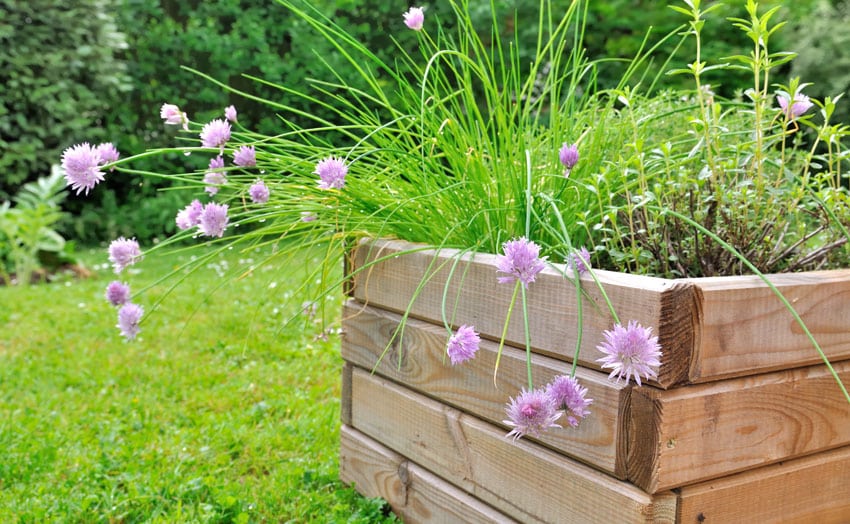
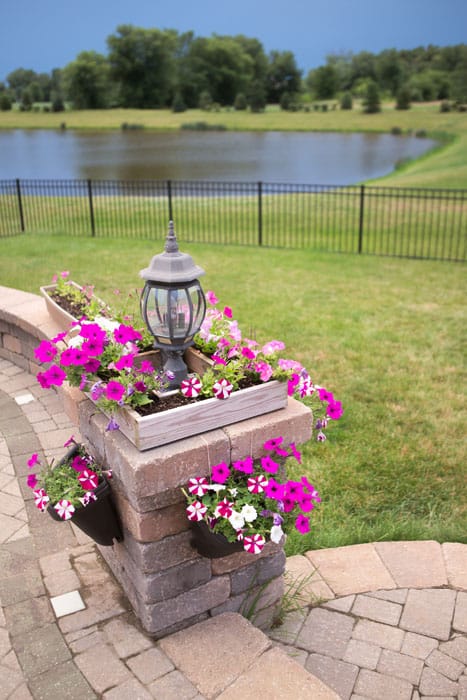
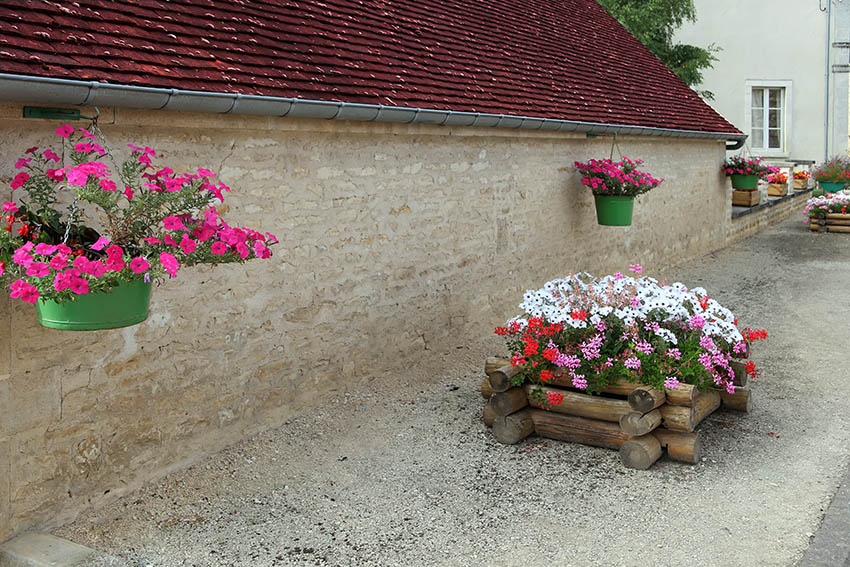
Blossom Box Designs
Antique hammered copper wash basin for flower planter – Source
This flower box is made up of old copper and brass with porcelain handles. Perfect for vintage and “old world” inspired houses and gardens, this can be hung and mounted on windows or used as a decorative garden piece.
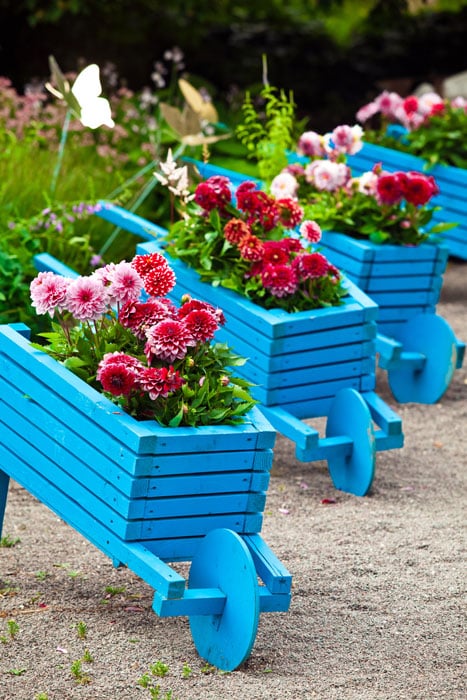
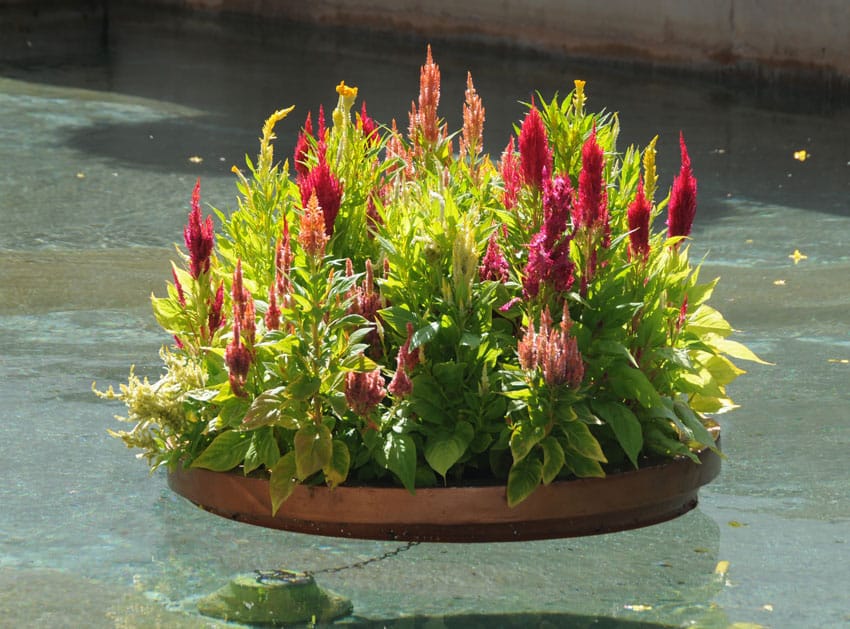
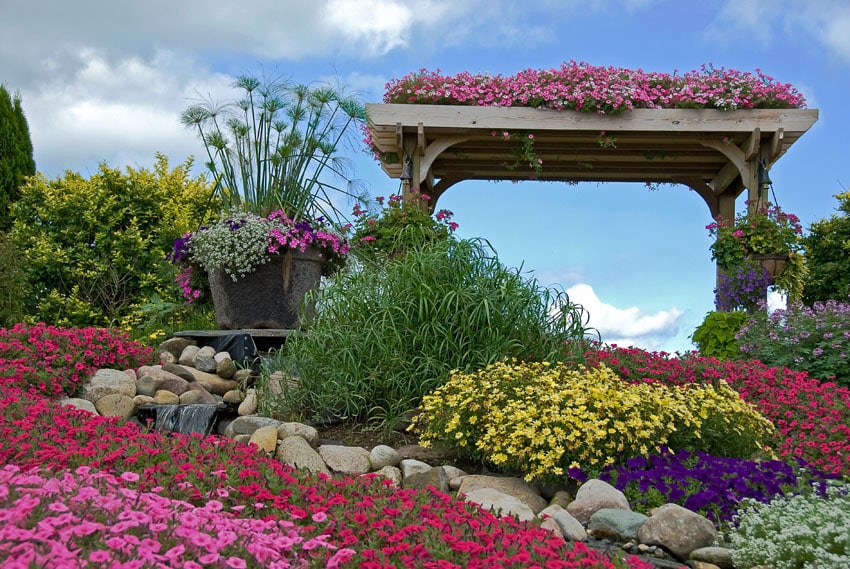
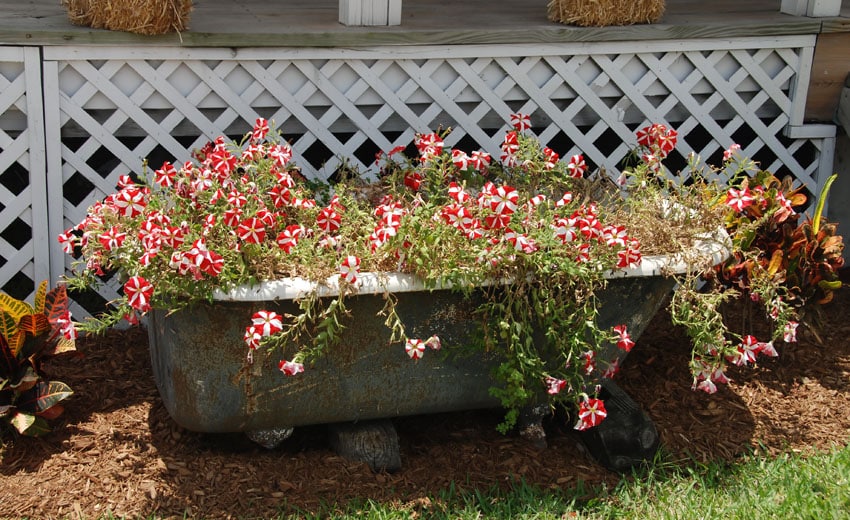
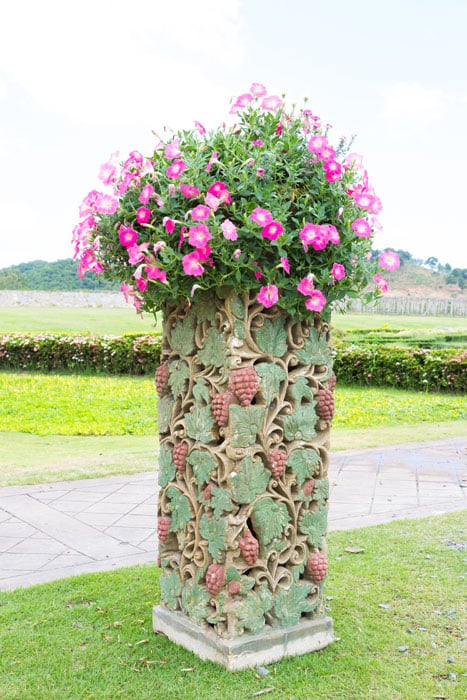
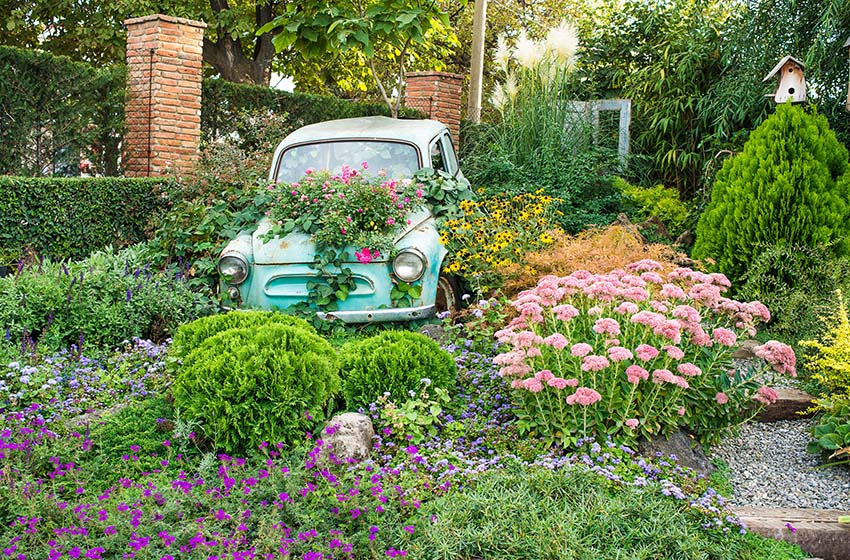
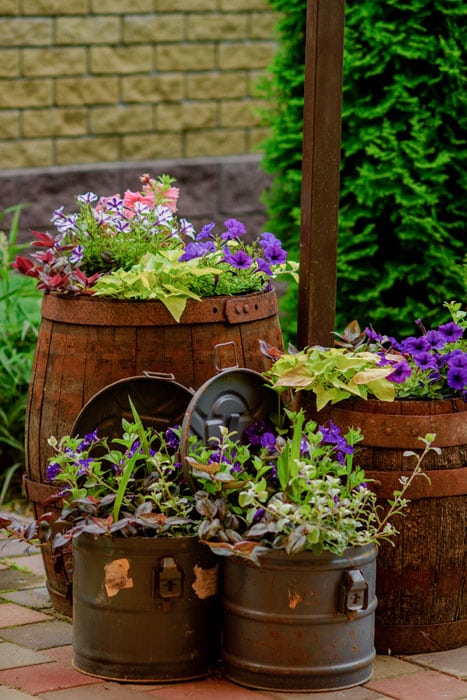
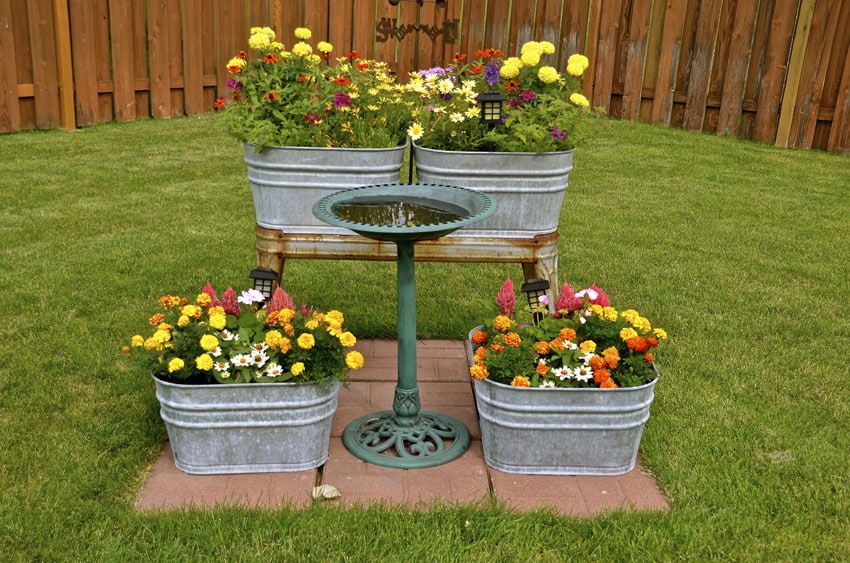
An old unused boat is an extraordinary material for a plant box but it can accommodate a large amount of perennials and flowers and creates a wonder focal point for n outdoor space.
Four wheel wagon planter box – Source
This Amish wagon decorative planter is a great way to showcase plants, rosettes and other garden accessories. Made up of wood and iron, it is guaranteed to last for years because of its durability.
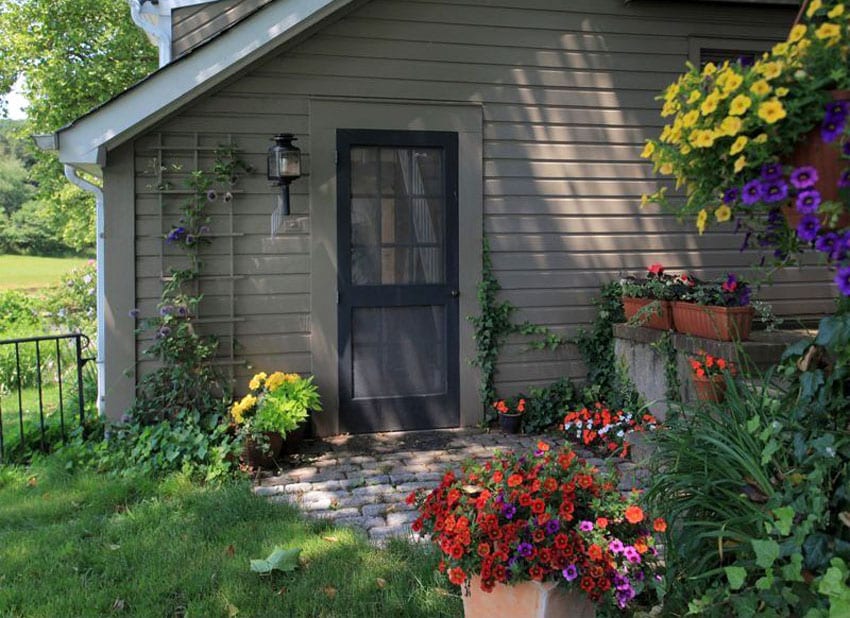
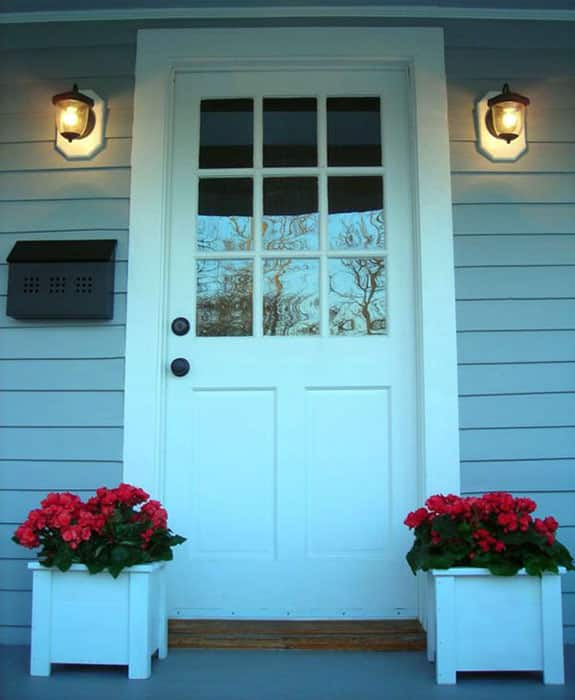
White plastic flower box – Source
This plastic planter box has a classic New England design that adds a charming touch to any patio or deck
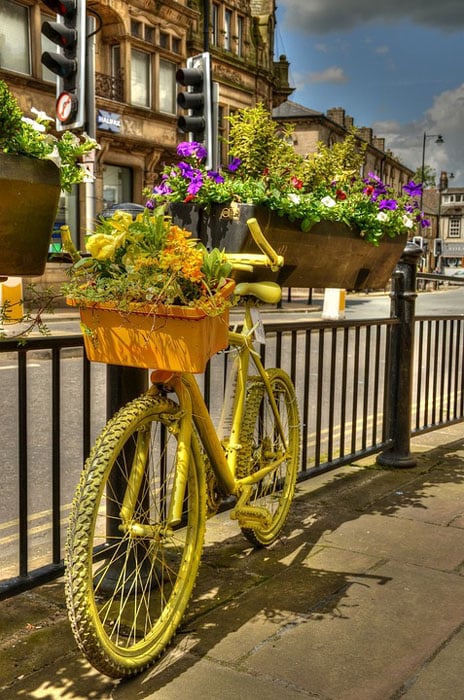
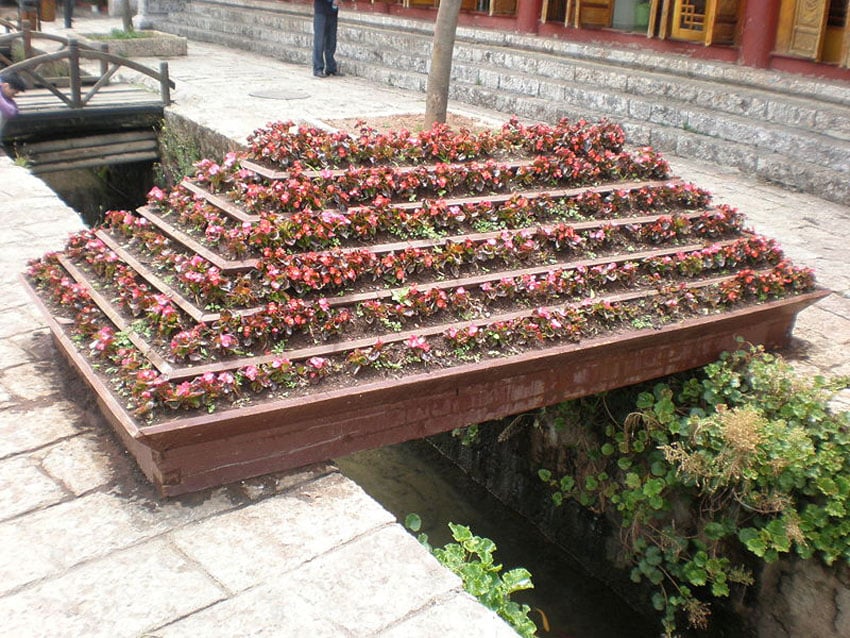
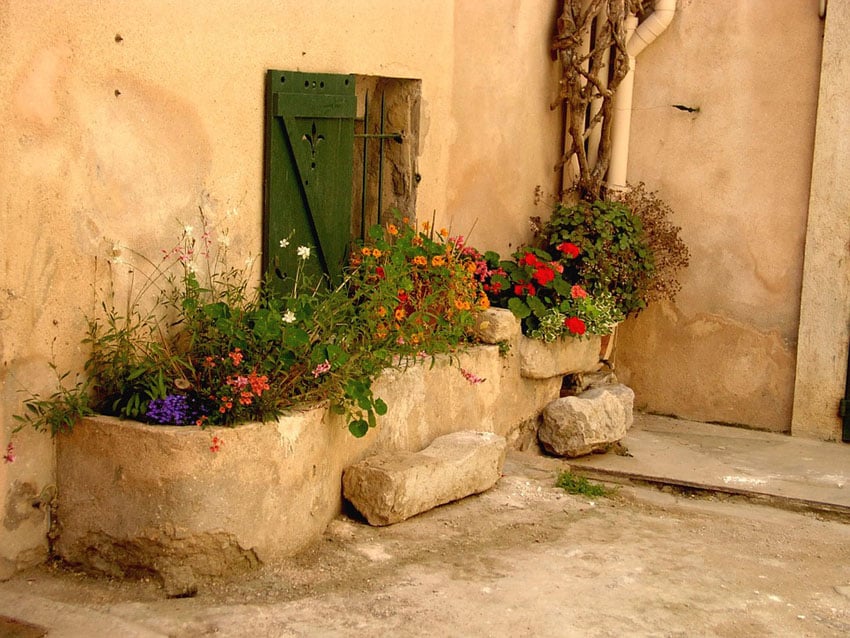
 Related Garden & Landscaping Galleries You May Like:
Related Garden & Landscaping Galleries You May Like:
Wheelbarrow Planter Ideas – Garden Fence Ideas – Walkway Ideas on a Budget – Fence Designs

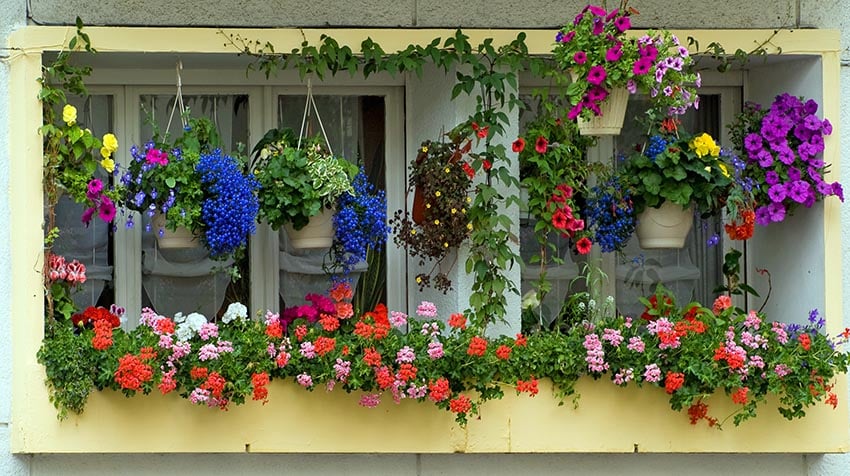 Best Flowers for Flower Boxes
Best Flowers for Flower Boxes
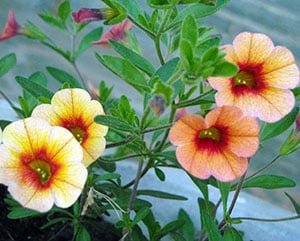
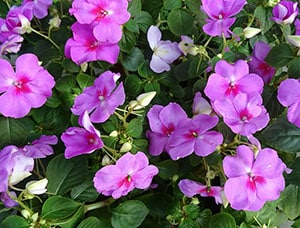

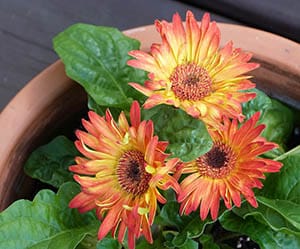
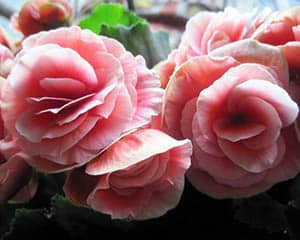
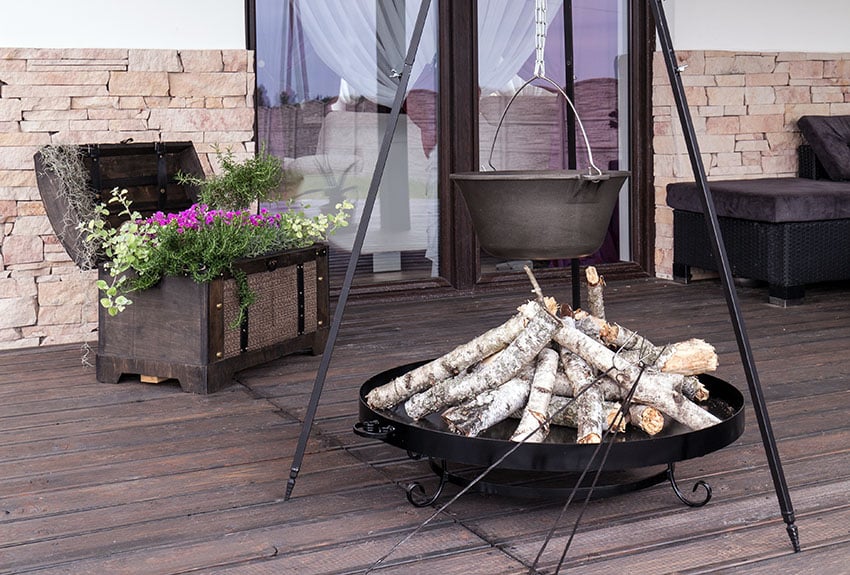
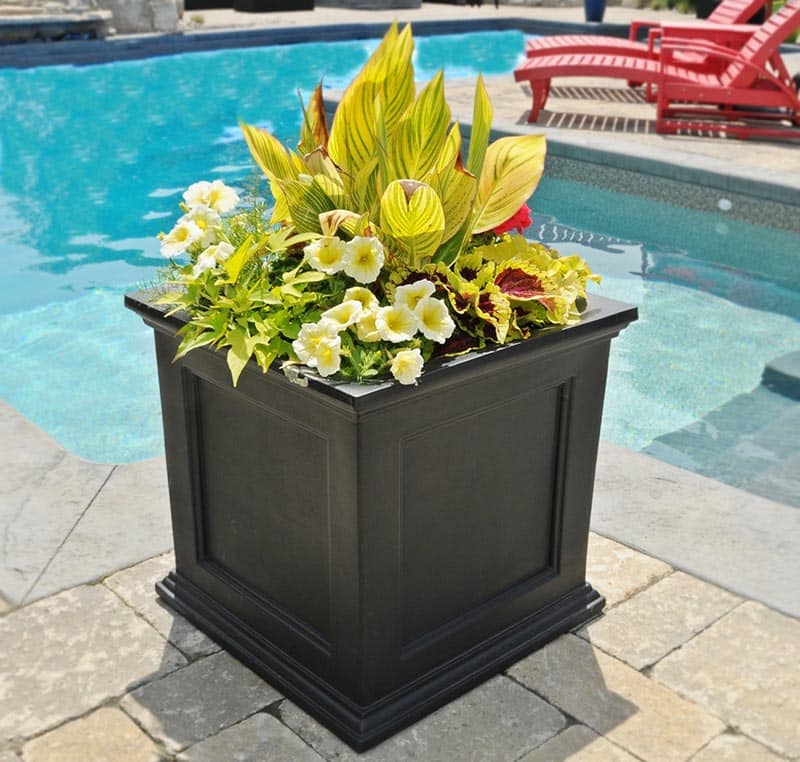
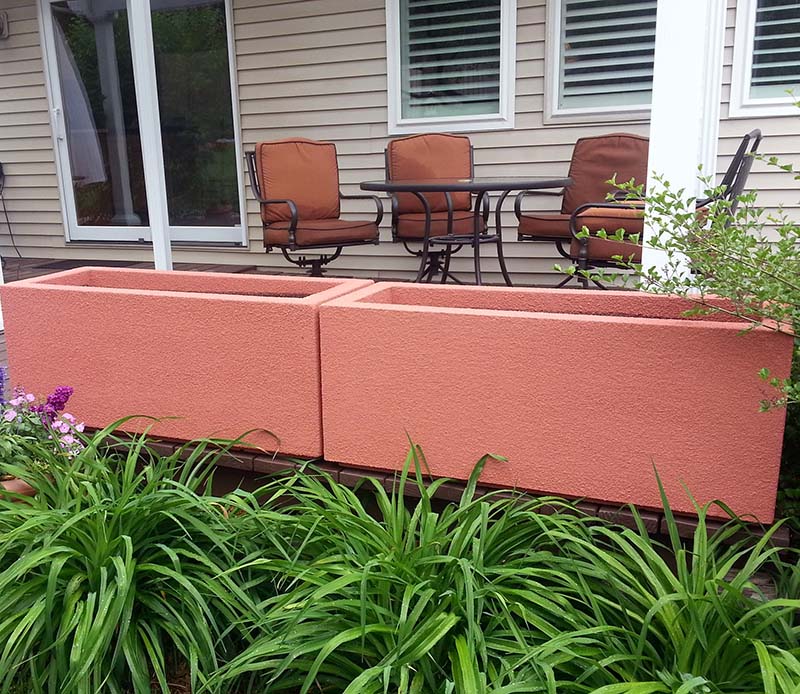
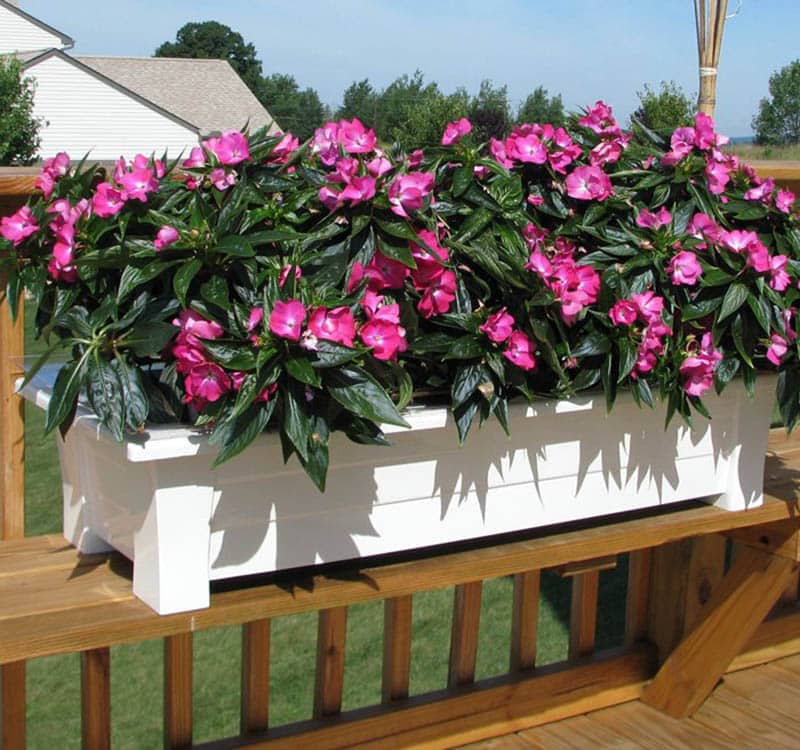
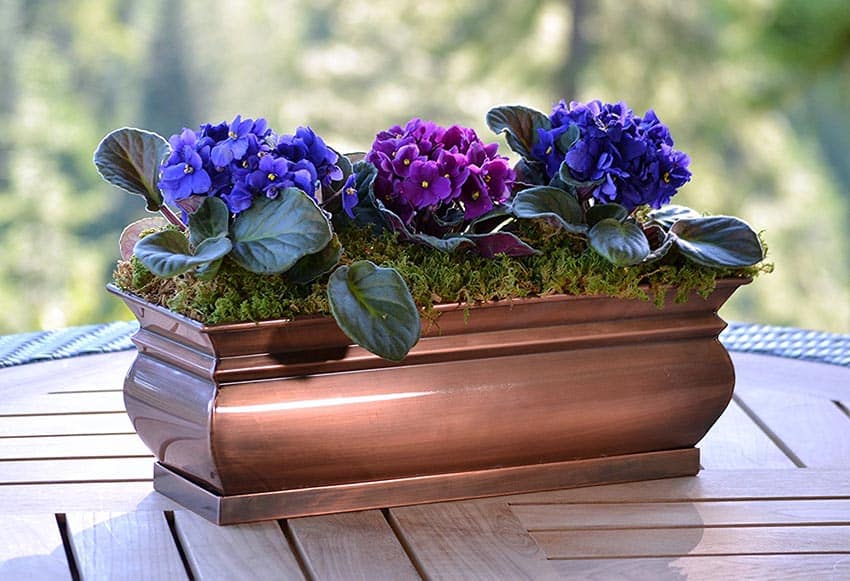
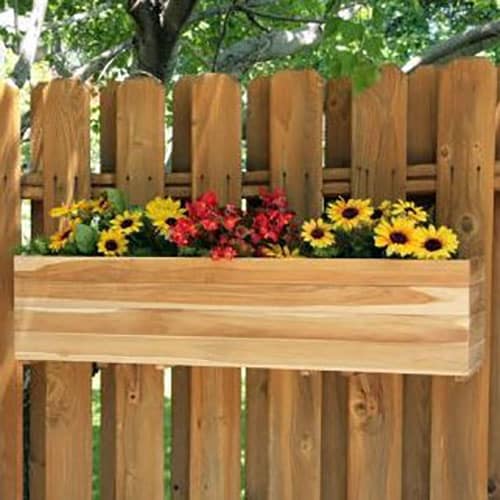
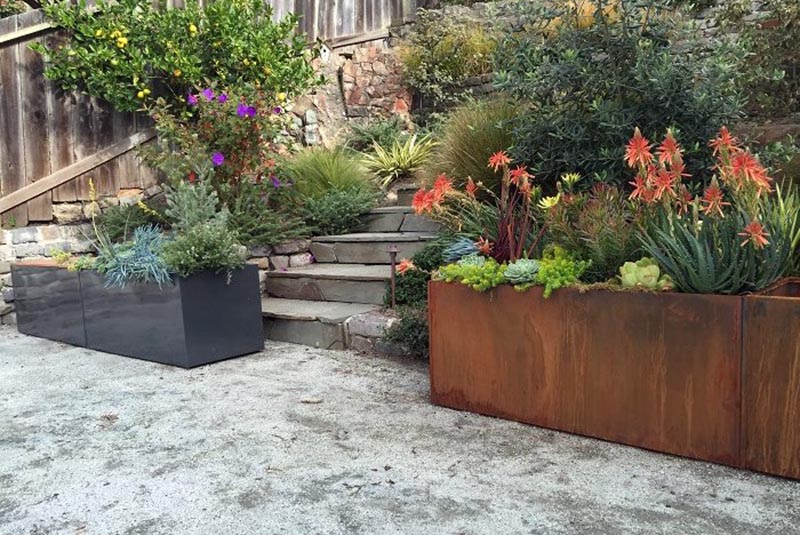


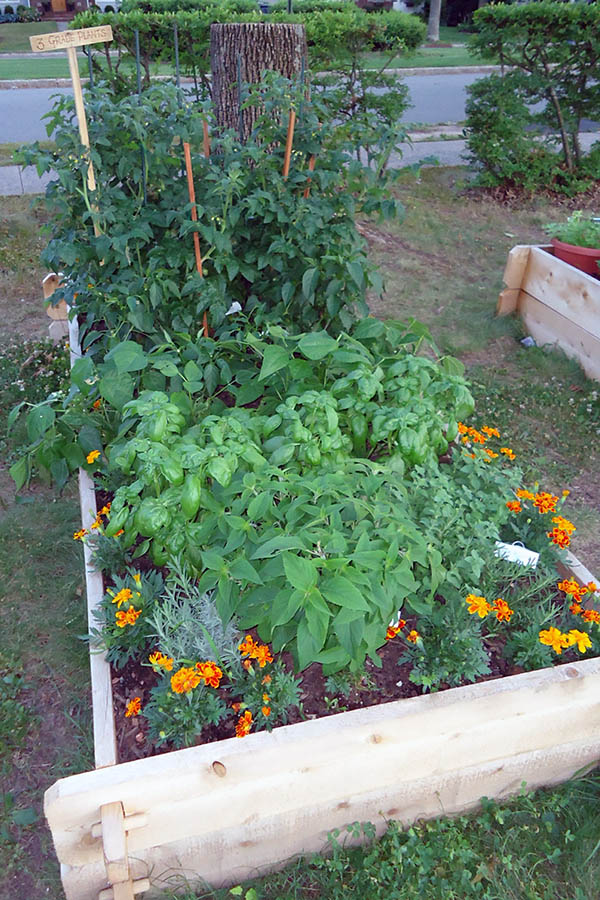
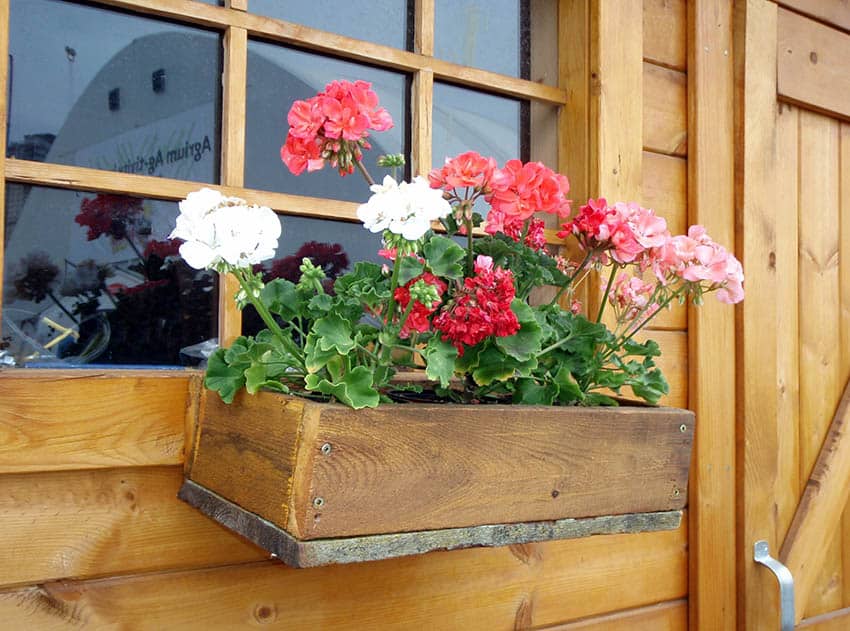
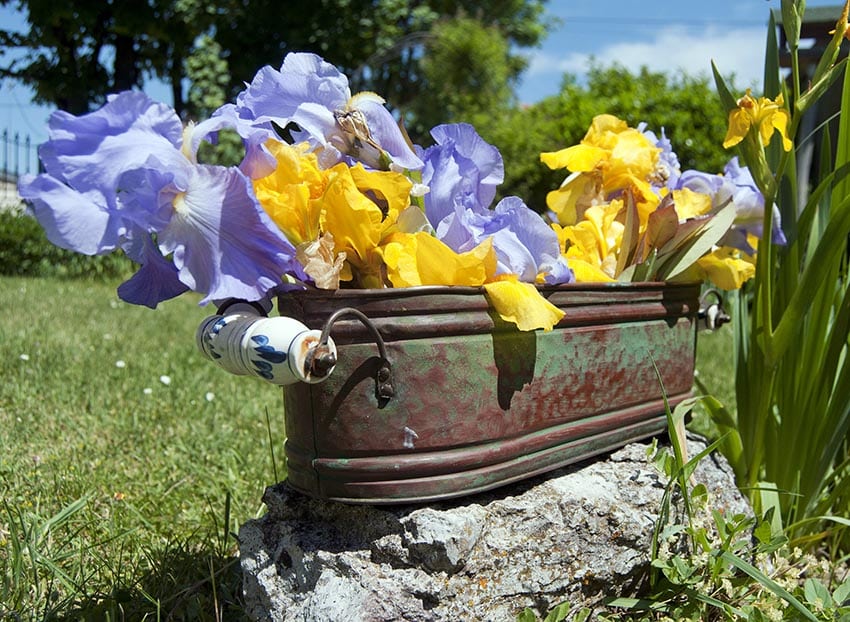
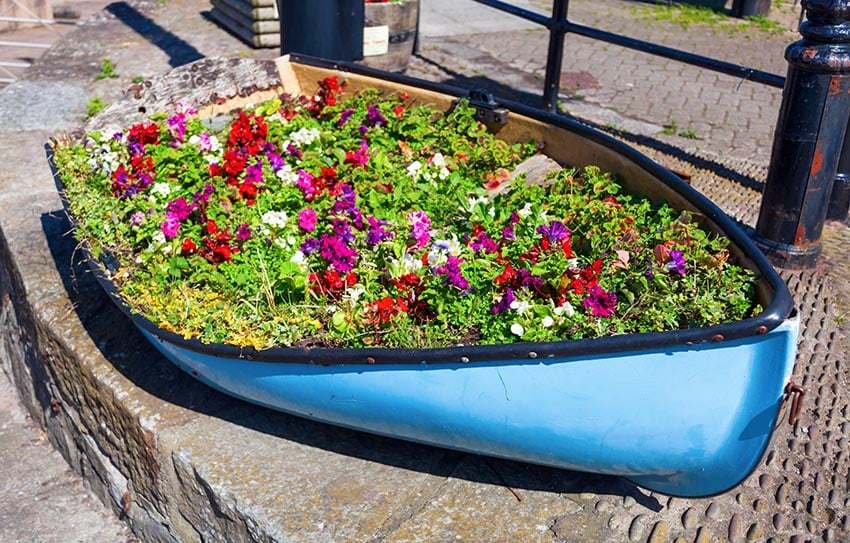
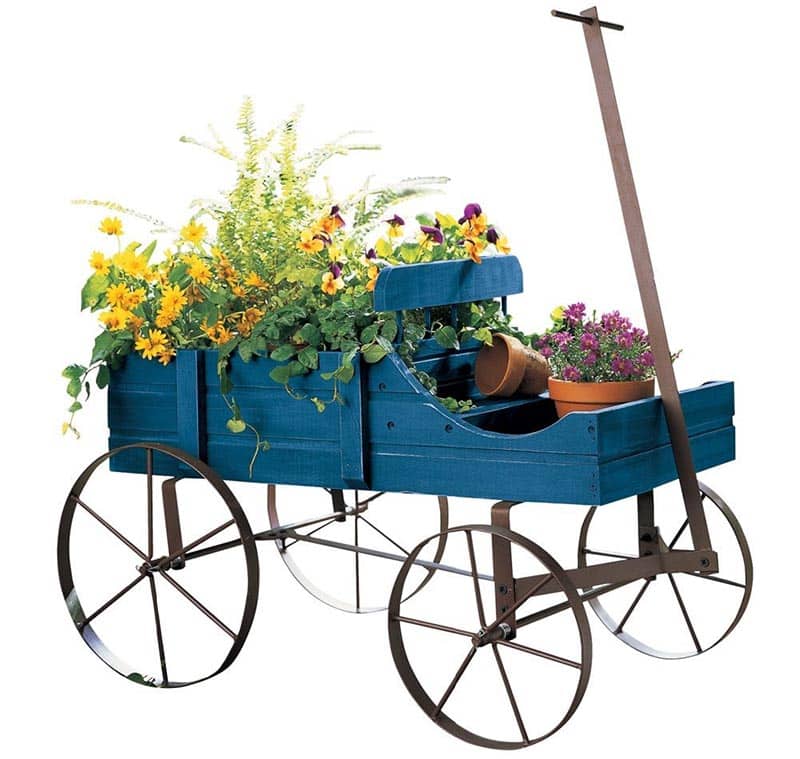
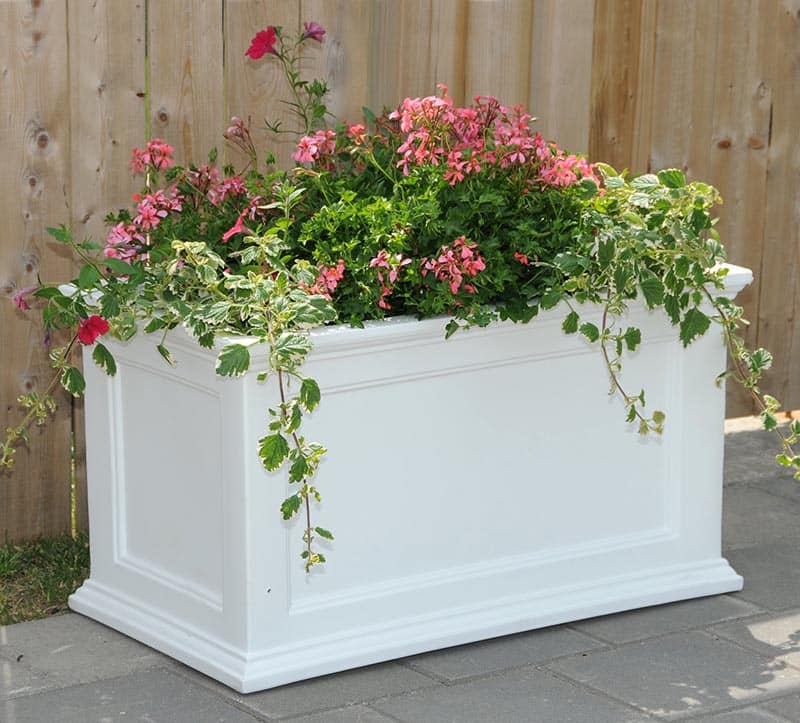
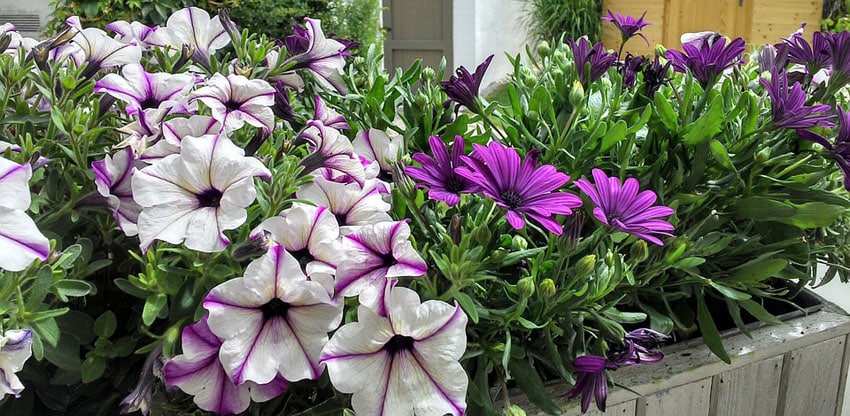 Related Garden & Landscaping Galleries You May Like:
Related Garden & Landscaping Galleries You May Like: